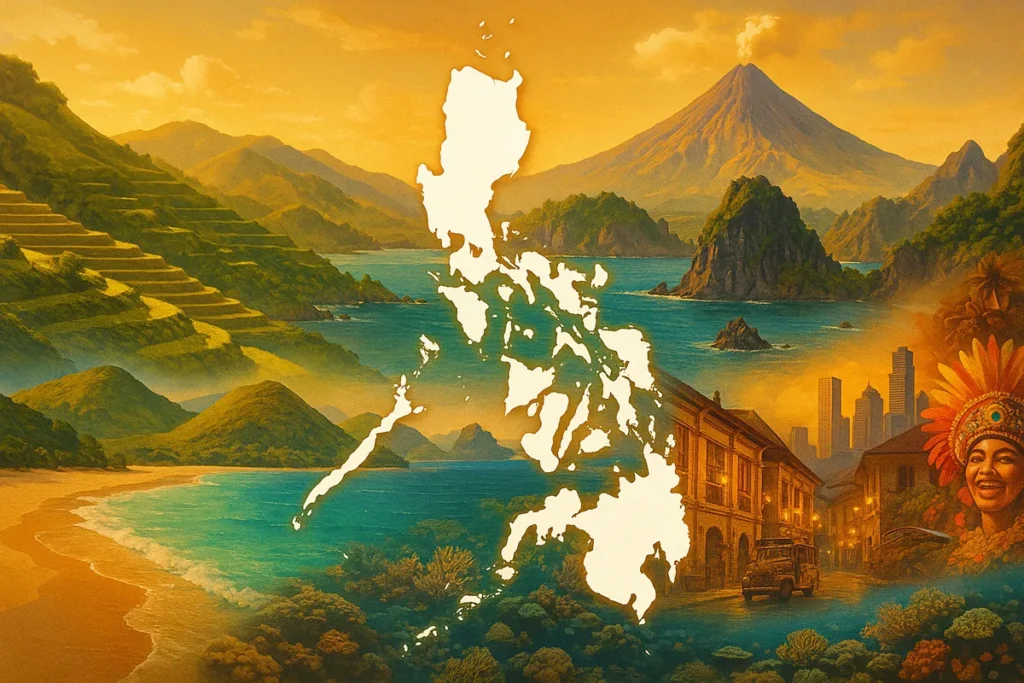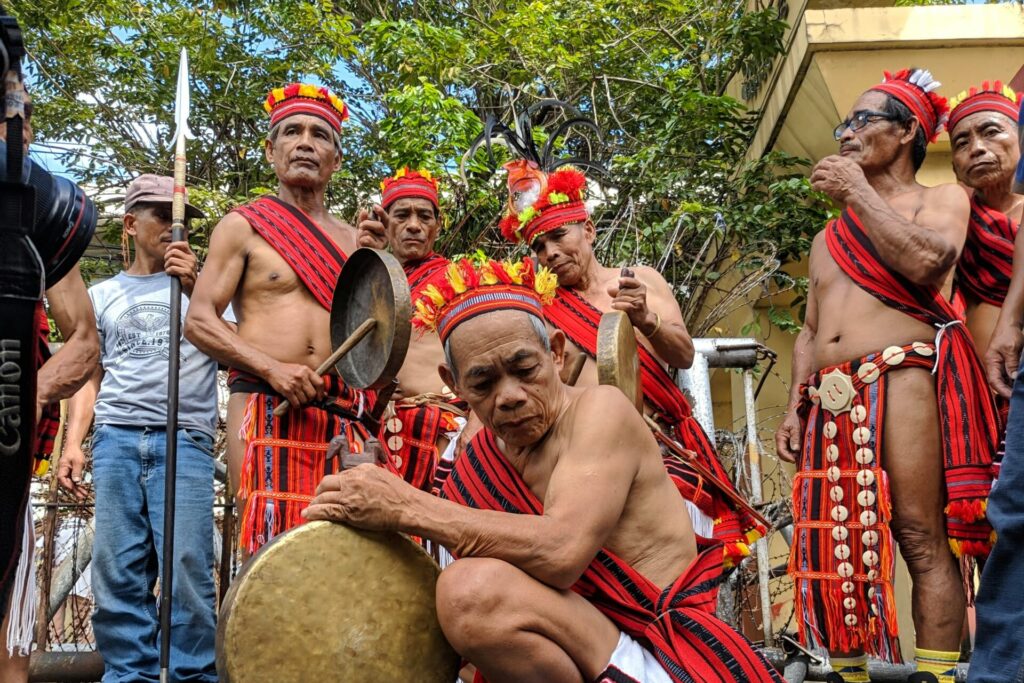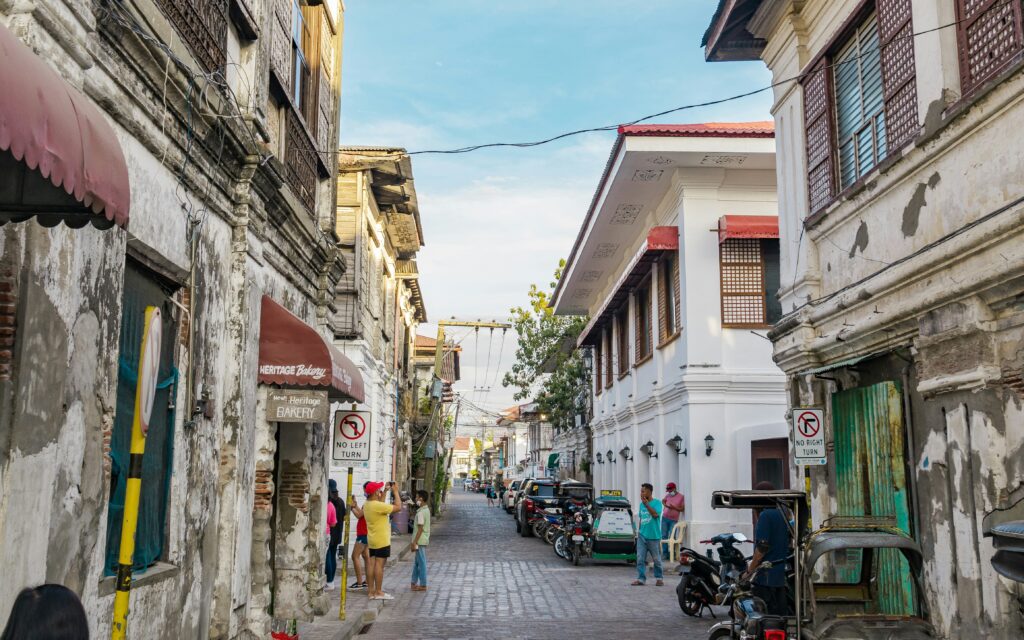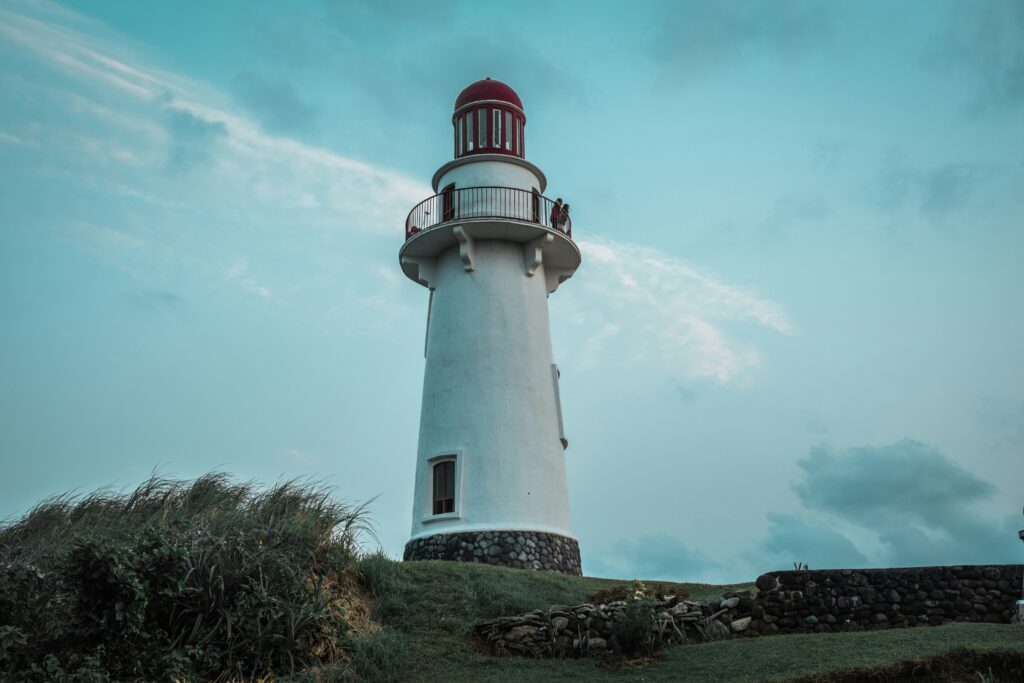The Philippines is a country made up of rich contrasts: islands dotted with powdery white beaches, mountains cloaked in forests, bustling cities filled with history, and small towns where traditions still thrive. At the heart of its beauty are the provinces, 82 in total, each carrying its own story, flavors, landscapes, and reasons to visit. Together, they form a mosaic that tells the full story of the archipelago.
Traveling across these provinces means experiencing more than just postcard views. It’s eating freshly caught seafood by the shore, joining colorful fiestas, hiking active volcanoes, listening to local folklore, and meeting people whose warmth defines Filipino hospitality.
This travel guide is your gateway to understanding what makes the provinces of the Philippines worth visiting, whether you’re a traveler searching for adventure, a foodie chasing authentic flavors, or someone who simply wants to understand the soul of the Philippines.
The 82 Provinces of The Philippines
Summary Per Region
82 Amazing Provinces of The Philippines Essential Travel Guide
Ilocos Region (Region I)
Wind-brushed headlands, lighthouse viewpoints, and heritage towns make Ilocos perfect for scenic road trips. Long coastal drives link windmills, rock formations, and golden beaches with easy food stops. Spanish-era streets, brick churches, and local bites (empanada, bagnet) keep city hours lively. Inland dunes and farms add soft adventure between seaside sunsets. Dry months (roughly November–May) bring clearer skies and calmer seas.
You can check out our full Ilocos Region Tourism Guide to start planning your trip.
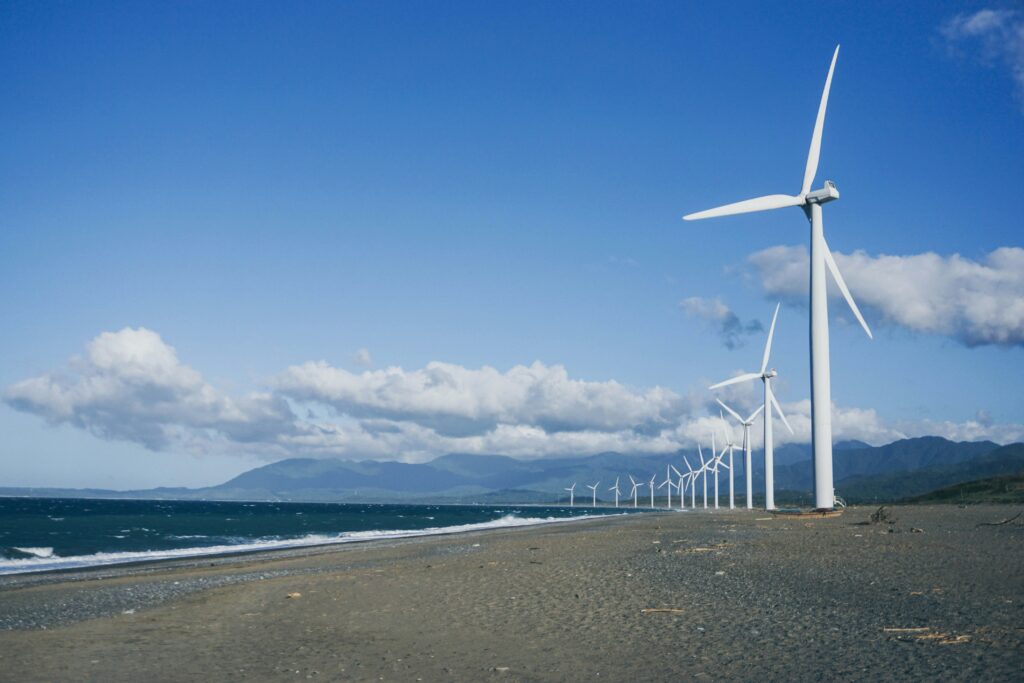
Provinces of the Philippines #1. Ilocos Norte
📌 Overview — Why go, Top 3, Best months, Safety note, Transit
Why go: Ilocos Norte mixes windmill-dotted shores, ochre dunes, and baroque heritage into one dramatic road trip. The coastline feels wide-open and cinematic, with lighthouses and headlands that glow at golden hour. Inland, Paoay’s UNESCO-listed church anchors foodie stops and ancestral homes. The dunes add playful adrenaline that contrasts with calm village life. Distances are short enough to do a lot without feeling rushed.
Top 3: Bangui Windmills; Paoay Sand Dunes 4×4 + sandboarding; Kapurpurawan Rock + Cape Bojeador Light.
Best months: November–April.
Safety note: Dunes get hot and windy—eye protection and hydration are essential; follow guides’ routes.
Transit: Fly to Laoag (LAO) or drive 8–10 hours from Manila via TPLEX/SCTEX/TPLEX.
Mini-Itinerary — Ilocos Norte
🧭 Open mini-itinerary & budget
Day 1 — Paoay Church and plaza walk; late-afternoon 4×4 and sandboarding; sunset dinner by the coast.
Day 2 — Sunrise at Bangui Windmills; Kapurpurawan + Cape Bojeador; Laoag heritage streets and empanada crawl.
Estimated daily budget: ₱3,500–5,500 (US$62–98)
Provinces of the Philippines #2. Ilocos Sur
📌 Overview — Why go, Top 3, Best months, Safety note, Transit
Why go: Ilocos Sur centers on Vigan’s Spanish-era urban fabric that still feels lived-in rather than staged. Calle Crisologo’s cobbles shine at dusk, while nearby lanes hide courtyards, museums, and ateliers. A short hop away, beaches and bell towers offer fresh light and air after your heritage walk. Local kitchens keep traditions alive with longganisa, bagnet, and vinegar blends. The pace is slow, perfect for pairs and families.
Top 3: Calle Crisologo and museums; Bantay Bell Tower; Mindoro Beach sunset.
Best months: December–March.
Safety note: Cobblestones are slippery when wet; mind kalesa lanes and pedestrian crossings.
Transit: Direct buses to Vigan (8–10 hours) or fly to Laoag then 2 hours by land.
Mini-Itinerary — Ilocos Sur
🧭 Open mini-itinerary & budget
Day 1 — Heritage core walk and pottery (Pagburnayan); café stop; evening lamps on Calle Crisologo.
Day 2 — Bantay Bell Tower views; Mindoro Beach for sunset; dinner in a bahay-na-bato restaurant.
Estimated daily budget: ₱3,000–5,000 (US$54–89)
Provinces of the Philippines #3. La Union
📌 Overview — Why go, Top 3, Best months, Safety note, Transit
Why go: La Union is Luzon’s most approachable surf-and-coffee strip, built for quick weekends. San Juan’s breaks suit beginners yet still satisfy intermediates on the right swell. Between sessions, creative cafés, markets, and small studios keep you lingering. Short drives add waterfalls, stone churches, and pebble beaches for variety. Sunsets are social here, with easygoing bars and live music.
Top 3: Urbiztondo beginner surf; Tangadan Falls; coastal café-hopping at golden hour.
Best months: November–March for consistent swell.
Safety note: Respect lifeguard flags and rips; soft-top boards are safer for first timers.
Transit: 4–6 hours by bus or car from Manila.
Mini-Itinerary — La Union
🧭 Open mini-itinerary & budget
Day 1 — Morning surf lesson; lazy café loop; sundown beach walk and drinks.
Day 2 — Tangadan Falls swim; Luna church and boulder beach; early dinner, drive back.
Estimated daily budget: ₱2,500–4,500 (US$45–80)
Provinces of the Philippines #4. Pangasinan
📌 Overview — Why go, Top 3, Best months, Safety note, Transit
Why go: Pangasinan is an easy island-hopping fix with calm waters and limestone blips you can climb. Hundred Islands packs viewpoints, snorkel gardens, caves, and zip lines into one park. Westward, Bolinao adds wide beaches, a lighthouse ridge, and spring-fed caves for cooling off. The water is usually mellow, great for families and first-time island hoppers. Seafood is plentiful and affordable after a day out.
Top 3: Hundred Islands boat day; Patar Beach (Bolinao); Enchanted Cave or similar spring caves.
Best months: December–May.
Safety note: Wear reef-safe sunscreen and water shoes on rocky sections; secure dry bags on banca rides.
Transit: 5–6 hours by land from Manila to Alaminos or Bolinao.
Mini-Itinerary — Pangasinan
🧭 Open mini-itinerary & budget
Day 1 — Early boat to Hundred Islands; snorkel and viewpoint loop; seafood in Alaminos.
Day 2 — Patar Beach + lighthouse; cave swim; sunset at Balingasay River.
Estimated daily budget: ₱2,800–4,800 (US$50–86)
Cagayan Valley (Region II)
Cagayan Valley stretches from white-sand islands to cave-studded river valleys. Palaui and Cape Engaño deliver cliffside trails with sweeping ocean views. Callao’s skylit chambers and the Pinacanauan River set relaxed nature hours near Tuguegarao’s hearty food scene. Wide highways cut through farms and rolling hills, keeping transfers smooth. It’s best explored in the dry months when roads and trail approaches are friendlier.
You can check out our full Cagayan Valley Tourism Guide to start planning your trip.
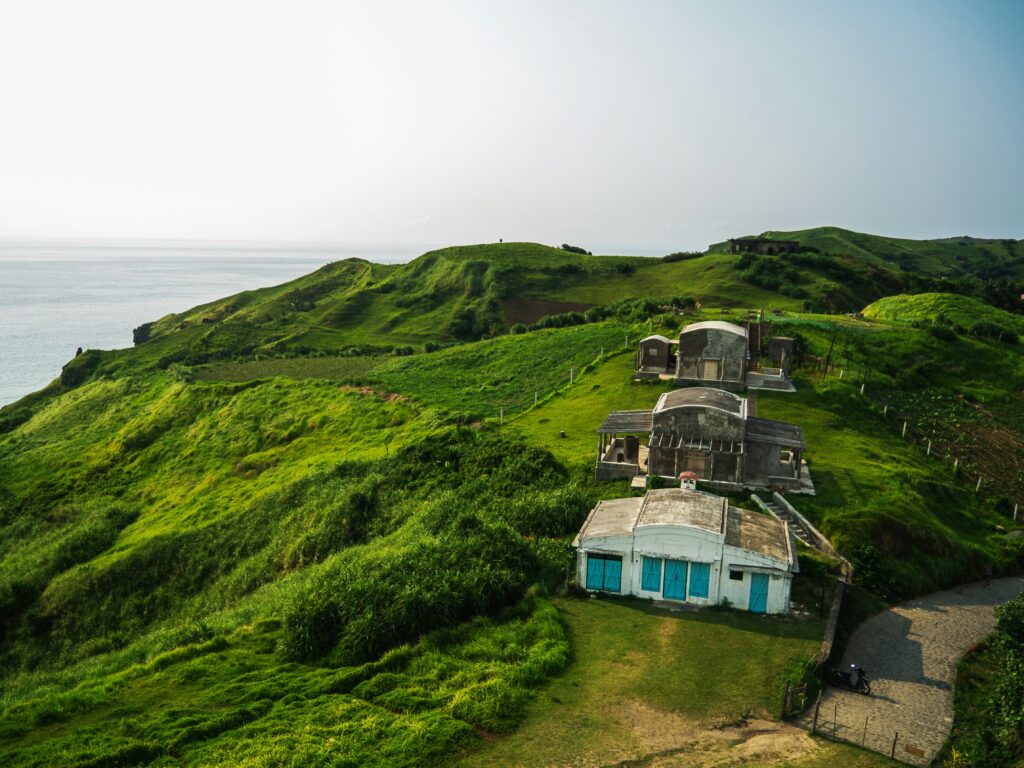
Provinces of the Philippines #5. Batanes
📌 Overview — Why go, Top 3, Best months, Safety note, Transit
Why go: Batanes feels like another country—rolling hills, stone houses, lighthouses, and abrupt cliffs. The landscapes are raw but walkable, with quiet roads perfect for tricycles or bikes. Villages reveal Ivatan craft, cuisine, and a gentle rhythm shaped by wind and sea. Weather makes every hour look different, so vistas never repeat. Limited flights and careful tourism keep it serene.
Top 3: Marlboro Hills; Vayang Rolling Hills; Sabtang Island villages and Morong Beach arch.
Best months: March–June for steadier flights and seas.
Safety note: Strong winds and sudden squalls are normal—pack layers and be flexible.
Transit: Limited direct flights to Basco (seasonal); pre-book early.
Mini-Itinerary — Batanes
🧭 Open mini-itinerary & budget
Day 1 — North Batan loop (Naidi Lighthouse, Vayang, Basco viewpoints); Ivatan dinner.
Day 2 — Sabtang day trip (Savidug, Chavayan, Morong); back to Basco for sunset.
Estimated daily budget: ₱5,500–8,500 (US$98–152)
Provinces of the Philippines #6. Cagayan
📌 Overview — Why go, Top 3, Best months, Safety note, Transit
Why go: Cagayan blends cathedral-like caves, river bends, and a frontier coast up to Palaui. Callao’s chambers glow with skylights, while river boats glide between limestone walls. Far north, waves carve the green headland of Cape Engaño beneath an old lighthouse. Food stops in Tuguegarao fuel your days with pancit batil patung. The drives are long but scenic and rewarding.
Top 3: Callao Cave + river; Palaui Island trek to Cape Engaño; Iguig Calvary Hills.
Best months: February–May.
Safety note: Sea and wind can shut Palaui; use accredited boats and watch forecasts.
Transit: Fly to Tuguegarao; drive 3–4 hours to Sta. Ana for Palaui.
Mini-Itinerary — Cagayan
🧭 Open mini-itinerary & budget
Day 1 — Callao Cave and river boats; Tuguegarao heritage stroll; noodle stop.
Day 2 — Early transfer to Sta. Ana; boat to Palaui; hike Cape Engaño and viewpoints.
Estimated daily budget: ₱2,800–4,800 (US$50–86)
Provinces of the Philippines #7. Isabela
📌 Overview — Why go, Top 3, Best months, Safety note, Transit
Why go: Isabela spreads across fertile plains and Sierra Madre foothills with brick-and-stone heritage in between. Tumauini’s church surprises with playful brick details and a rare circular belfry. Waterfalls and forest routes on the east feel genuinely wild when conditions allow. Big dams and rivers give you wide-angle landscapes at sunset. Towns are friendly and food is hearty, with corn-based staples.
Top 3: Tumauini Church; Dibulo Falls (Dinapigue, if accessible); Magat Dam lookouts.
Best months: December–April.
Safety note: Some roads are remote—check vehicle, fuel, and daylight; verify falls access.
Transit: Fly to Cauayan or Tuguegarao; long-distance buses also run from Manila.
Mini-Itinerary — Isabela
🧭 Open mini-itinerary & budget
Day 1 — Tumauini Church and Ilagan parks; local snack stops; Cauayan dinner.
Day 2 — Drive to Dinapigue for Dibulo Falls (if open/ok); return with Magat viewpoints.
Estimated daily budget: ₱2,500–4,500 (US$45–80)
Provinces of the Philippines #8. Nueva Vizcaya
📌 Overview — Why go, Top 3, Best months, Safety note, Transit
Why go: Nueva Vizcaya is the quiet green hinge between lowlands and Cordillera highlands. Caves, rivers, and eco-parks invite easy hikes and water time. Highland barangays offer coffee views and pine-lined roads without the crowds. Markets are authentic, with farm-fresh produce and simple meals. It’s a natural pause on a longer northbound loop.
Top 3: Capisaan Cave; Lower Magat Eco-Tourism Park; Imugan/Malico highlands.
Best months: November–March.
Safety note: Wear proper footwear and bring headlamps; expect wet cave sections.
Transit: 4–6 hours by land from Manila; also reachable from Baguio/Isabela corridors.
Mini-Itinerary — Nueva Vizcaya
🧭 Open mini-itinerary & budget
Day 1 — Guided Capisaan Cave; river picnic or eco-park activities; sunset farm stop.
Day 2 — Coffee and viewpoints in Malico/Imugan; short forest trail; onward drive.
Estimated daily budget: ₱2,200–4,000 (US$39–71)
Provinces of the Philippines #9. Quirino
📌 Overview — Why go, Top 3, Best months, Safety note, Transit
Why go: Quirino feels delightfully off-grid with rivers you can float and gorges you can scramble. Aglipay’s cave systems range from easy to challenging, all under thick forest. Governor’s Rapids turns into a natural lazy ride in the right flow. You’ll meet hospitable guides and small homestays rather than big resorts. Nights are for campfires and bright stars.
Top 3: Aglipay Caves; Governor’s Rapids tubing; Siitan Gorge.
Best months: December–May.
Safety note: Always wear PFDs for river activities; postpone after heavy rain.
Transit: 7–9 hours by land from Manila; easiest entry via Nueva Vizcaya.
Mini-Itinerary — Quirino
🧭 Open mini-itinerary & budget
Day 1 — Aglipay cave circuit with local guide; town grill dinner.
Day 2 — Governor’s Rapids tubing; Siitan Gorge swim; farm visit before sunset.
Estimated daily budget: ₱2,200–4,000 (US$39–71)
Central Luzon (Region III)
Central Luzon is the country’s broad farm belt framed by bays, mountains, and wartime landmarks. Coastal Zambales, historic Bataan, and culinary Pampanga give you three distinct weekend flavors. Volcano-carved valleys and lahar canyons add easy day hikes and 4×4 photo loops. Cities, airports, and expressways make logistics simple even for quick getaways. Expect warm days, breezy sunsets, and plenty of roadside grills.
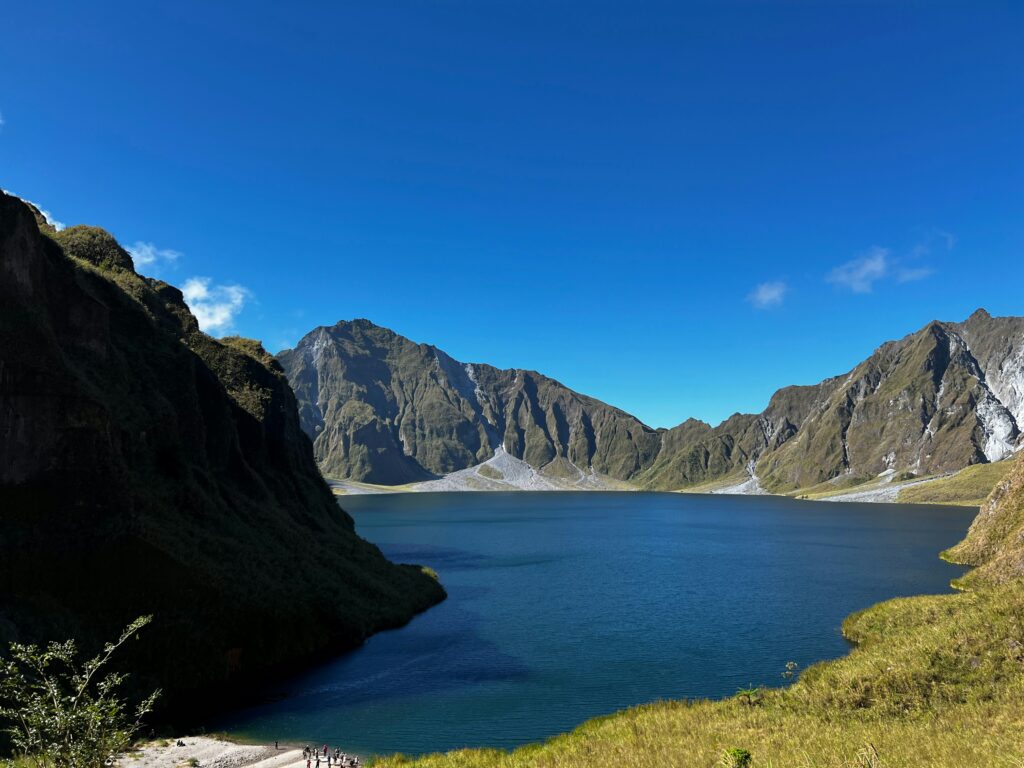
Provinces of the Philippines #10. Aurora
📌 Overview — Why go, Top 3, Best months, Safety note, Transit
Why go: Aurora’s surf town vibe in Baler pairs waves with rainforest trails and museum stops. Beginners can learn safely on Sabang’s forgiving beach break. Ditumabo’s cold cascade resets you after salt and sun. Coastal viewpoints and pebble fields deliver moody sunrise photos. The scene stays small-town friendly even on busy weekends.
Top 3: Sabang Beach surf; Ditumabo “Mother” Falls; Baler Museum and balete tree.
Best months: October–March (surf); February–May (calmer seas and coves).
Safety note: Observe surf flags; mountain roads can be slick after rain.
Transit: 5–6 hours by land from Manila.
Mini-Itinerary — Aurora
🧭 Open mini-itinerary & budget
Day 1 — Surf lesson and town museum; dusk walk by the bay.
Day 2 — Ditumabo Falls hike; Ampere Beach sunrise rocks; coffee with ocean view.
Estimated daily budget: ₱2,500–4,500 (US$45–80)
Provinces of the Philippines #11. Bataan
📌 Overview — Why go, Top 3, Best months, Safety note, Transit
Why go: Bataan balances solemn WWII sites with photogenic heritage streets and turtle conservation. The cross on Mt. Samat watches over a peninsula of coves and fishing villages. Las Casas Filipinas reassembles historic houses into a walkable set piece. Seasonal pawikan centers protect nesting turtles and run community programs. Drives are short, so you can do history, culture, and beach in a day.
Top 3: Mt. Samat National Shrine; Las Casas heritage tour; Pawikan Conservation Center (seasonal).
Best months: November–April.
Safety note: Follow no-flash rules at nesting sites; mind steep steps at monuments.
Transit: 3–4 hours by land from Manila.
Mini-Itinerary — Bataan
🧭 Open mini-itinerary & budget
Day 1 — Mt. Samat museum + ridge views; Las Casas streets and canals; sunset by Bagac coves.
Day 2 — Pawikan center visit (Nov–Feb); Morong beach time; seafood lunch.
Estimated daily budget: ₱2,800–4,800 (US$50–86)
Provinces of the Philippines #12. Bulacan
📌 Overview — Why go, Top 3, Best months, Safety note, Transit
Why go: Bulacan’s proximity to Manila hides surprising nature pockets and revolutionary landmarks. Biak-na-Bato offers caves, rivers, and forest shade for family hikes. Barasoain and heritage lanes connect you to foundational stories of the republic. Crafts and sweets make easy bring-home treats after a day out. It’s an uncomplicated culture-and-nature sampler.
Top 3: Biak-na-Bato National Park; Barasoain Church; heritage town food crawl.
Best months: November–February.
Safety note: Bring headlamps for caves; check river levels during rainy spells.
Transit: 1–2 hours by land from Manila.
Mini-Itinerary — Bulacan
🧭 Open mini-itinerary & budget
Day 1 — Barasoain + heritage walk; market snacks; riverside afternoon in Biak-na-Bato.
Day 2 — Easy cave loop; pottery/weaving stops; early dinner, drive back.
Estimated daily budget: ₱2,000–3,800 (US$36–68)
Provinces of the Philippines #13. Nueva Ecija
📌 Overview — Why go, Top 3, Best months, Safety note, Transit
Why go: Nueva Ecija unfolds as rice-country panoramas broken by emerald rivers and reservoirs. Minalungao’s limestone walls frame jade water perfect for rafts and swims. Country roads at golden hour turn into photography magnets. Lakeside lookouts calm the pace before dinner in small towns. It’s a restorative detour on a north-south drive.
Top 3: Minalungao River; Pantabangan Lake viewpoints; kakanin markets and farm stops.
Best months: December–April.
Safety note: Verify access to Minalungao—conditions change after heavy rains.
Transit: 3–5 hours by land from Manila.
Mini-Itinerary — Nueva Ecija
🧭 Open mini-itinerary & budget
Day 1 — Minalungao swim/raft; picnic; sunset in the fields.
Day 2 — Pantabangan viewpoints; lakeside brunch; roll onward to the Cordilleras or Pampanga.
Estimated daily budget: ₱2,200–4,000 (US$39–71)
Provinces of the Philippines #14. Pampanga
📌 Overview — Why go, Top 3, Best months, Safety note, Transit
Why go: Pampanga is the country’s culinary showcase, from sisig to heirloom recipes served in heritage homes. Century-old churches and woodcarving workshops add artistry to the plate. The lantern tradition shines in the –ber months with workshops and festivals. Clark’s museums and parks create a balanced day for families. Every stop has a story, and many are delicious.
Top 3: Angeles food crawl; Betis Church and woodcarvers; lantern makers (seasonal).
Best months: November–February; December for lantern season.
Safety note: Make weekend bookings; respect church dress codes and workshop rules.
Transit: 1.5–3 hours by land from Manila; Clark (CRK) flights available.
Mini-Itinerary — Pampanga
🧭 Open mini-itinerary & budget
Day 1 — Betis Church + carving studios; Angeles tasting crawl; dessert run.
Day 2 — Clark museum/park loop; lantern workshops (in season); tsokolate merienda.
Estimated daily budget: ₱3,000–5,000 (US$54–89)
Provinces of the Philippines #15. Tarlac
📌 Overview — Why go, Top 3, Best months, Safety note, Transit
Why go: Tarlac is the practical gateway to Mt. Pinatubo’s otherworldly crater lake. The 4×4 approach across lahar plains feels like another planet before the final trek. Monasteries and farm roads offer gentle, reflective hours after the hike. Local kakanin stalls are a reward you earn. The loop pairs adventure with quiet countryside.
Top 3: Mt. Pinatubo trek via Capas; Monasterio de Tarlac; farm and kakanin stops.
Best months: December–March for firmer trails and cooler temps.
Safety note: Pinatubo requires accredited guides and early starts; sun exposure is strong.
Transit: 3–4 hours by land from Manila.
Mini-Itinerary — Tarlac
🧭 Open mini-itinerary & budget
Day 1 — 4×4 to trailhead; trek and crater photos; late lunch in town.
Day 2 — Monasterio ridge; farm visit; drive to Zambales or Pangasinan.
Estimated daily budget: ₱2,200–4,000 (US$39–71)
Provinces of the Philippines #16. Zambales
📌 Overview — Why go, Top 3, Best months, Safety note, Transit
Why go: Zambales’ coves were carved by time and volcanoes, leaving pine-lined beaches and simple campsites. Day boats make quick work of transfers, yet the coves feel unplugged. Surf towns like Liwliwa add friendly breaks and sunset kiosks. Capones’ lighthouse brings a dash of maritime history to island days. It’s a low-fuss beach escape with a bit of everything.
Top 3: Anawangin or Nagsasa Cove camping; Liwliwa surf session; Capones Lighthouse stop.
Best months: November–May for calm seas; August–February for swell windows.
Safety note: Landings can be splashy—pack dry bags; secure tents against gusts.
Transit: 4–5 hours by land from Manila.
Mini-Itinerary — Zambales
🧭 Open mini-itinerary & budget
Day 1 — Boat to cove; hike to viewpoints; campfire and stargazing.
Day 2 — Capones Lighthouse hop; Liwliwa surf; street-side tacos at sunset.
Estimated daily budget: ₱2,800–4,800 (US$50–86)
CALABARZON (Region IV-A)
CALABARZON mixes highland views, heritage towns, hot springs, and serious coastal dives. Tagaytay’s cool ridge cafés stare straight into lake-and-volcano panoramas. Batangas lays out snorkel coves and dive sites alongside laid-back beaches. Laguna adds forest springs and falls, while Quezon brings festivals, long coastlines, and coconut-rich kitchens. It’s a flexible region where short drives connect completely different moods.
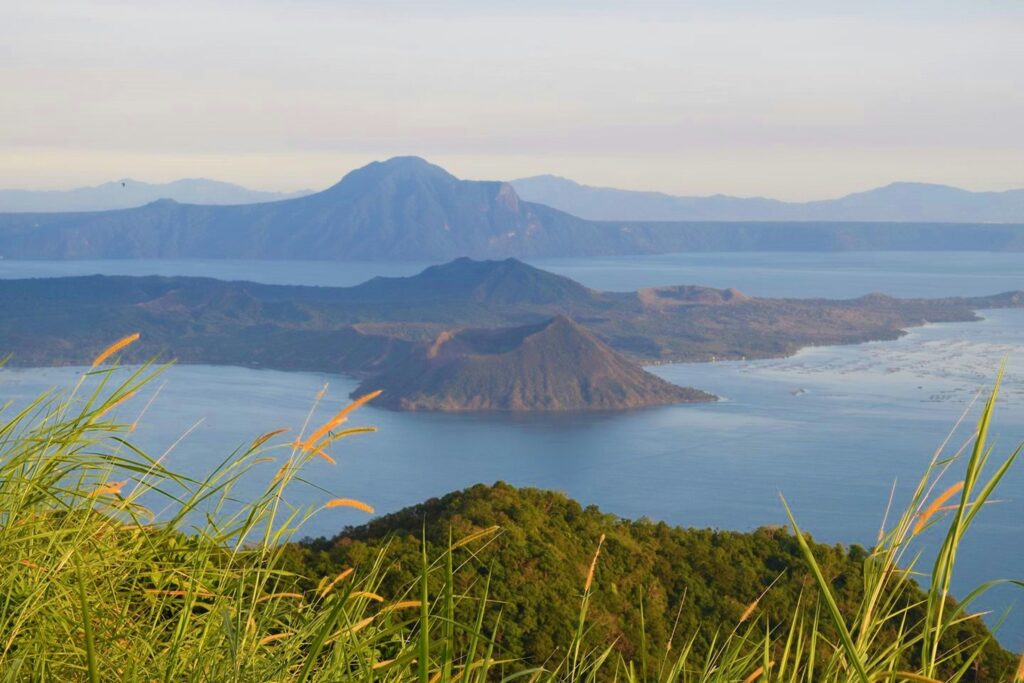
Provinces of the Philippines #17. Batangas
📌 Overview — Why go, Top 3, Best months, Safety note, Transit
Why go: Batangas delivers quick-access reefs and beaches without flying out of Manila. Anilao’s house reefs and shore entries make snorkeling and beginner dives easy to plan. The heritage town of Taal adds ancestral homes, a grand basilica, and heirloom food breaks. Offshore, Fortune Island brings cliff views and photogenic ruins for day trips. You can mix sea time, heritage, and cafés in one smooth weekend.
Top 3: Anilao snorkel/dive; Taal heritage town walk; Fortune Island day trip.
Best months: November–May for calmer seas and clearer water.
Safety note: Check currents/visibility and use reputable operators; bring reef-safe sunscreen.
Transit: 2–3.5 hours by land from Manila (longer on peak weekends).
Mini-Itinerary — Batangas
🧭 Open mini-itinerary & budget
Day 1 — Anilao reef snorkel/intro dive; house-reef chill; seafood by the bay.
Day 2 — Taal heritage walk (basilica, museums, crafts); bulalo/lomi lunch; lake-view café stop.
Estimated daily budget: ₱3,500–6,500 (US$62–116)
Provinces of the Philippines #18. Cavite
📌 Overview — Why go, Top 3, Best months, Safety note, Transit
Why go: Cavite pairs Tagaytay’s cool ridge views with easy cafés and gardens. History trails run from Aguinaldo Shrine to coastal batteries and ferries to Corregidor. Family parks, farm stops, and picnic lawns keep days relaxed and photogenic. Fog and breeze make hot afternoons feel kinder than in the lowlands. It’s the fastest “climate change” getaway from Metro Manila.
Top 3: Tagaytay ridge brunch with Taal view; Aguinaldo Shrine (Kawit); Corregidor day tour (via Manila/Cavite).
Best months: November–February for cooler air and clearer ridge views.
Safety note: Ridge fog/haze can limit visibility—arrive early and watch traffic on weekends.
Transit: 1.5–3 hours by land from Manila depending on your area and traffic.
Mini-Itinerary — Cavite
🧭 Open mini-itinerary & budget
Day 1 — Tagaytay gardens and ridge cafés; people’s park or sky viewpoints; hot cacao at sunset.
Day 2 — Aguinaldo Shrine + old town walk; optional Corregidor day tour; bulalo dinner.
Estimated daily budget: ₱2,200–4,000 (US$39–71)
Provinces of the Philippines #19. Laguna
📌 Overview — Why go, Top 3, Best months, Safety note, Transit
Why go: Laguna lines up waterfalls, hot springs, and lakes within an easy drive. Pagsanjan’s boatmen shoot rapids to a misty amphitheater behind the falls. San Pablo’s Seven Lakes loop makes a relaxed foodie-and-nature circuit. Crafts and footwear towns add affordable shopping between nature stops. Evenings end in warm spring resorts perfect for groups.
Top 3: Pagsanjan/Magadapio Falls boat; San Pablo Seven Lakes; Calamba/Los Baños hot springs.
Best months: December–April for lower rain and clearer lake days.
Safety note: Wear life vests in canyons; springs can be very warm—hydrate and limit long soaks.
Transit: 2–3 hours by land from Manila depending on your base town.
Mini-Itinerary — Laguna
🧭 Open mini-itinerary & budget
Day 1 — Boat to Pagsanjan Falls; lakeside lunch in Lumban/Pagsanjan; late-day hot spring soak.
Day 2 — San Pablo Seven Lakes walk and cafés; Liliw footwear street; Nagcarlan Underground Cemetery.
Estimated daily budget: ₱2,500–4,500 (US$45–80)
Provinces of the Philippines #20. Quezon
📌 Overview — Why go, Top 3, Best months, Safety note, Transit
Why go: Quezon swings from festival towns to Pacific-facing islands and piney hills. Lucban explodes with color during Pahiyas while serving pancit habhab all year. Mauban’s Cagbalete and Burdeos/Jomalig offer sandbars and dune-like textures in season. Pilgrimage hills and forested routes add active stops between beach days. It’s diverse, delicious, and road-trip friendly.
Top 3: Pahiyas Festival in Lucban (May); Kamay ni Hesus hill complex; Cagbalete or Jomalig sandbar days.
Best months: March–May for islands; May specifically for Pahiyas.
Safety note: Boat schedules are weather-dependent; pre-book slots and check sea conditions.
Transit: 4–6 hours by land from Manila; add boat time for outer islands.
Mini-Itinerary — Quezon
🧭 Open mini-itinerary & budget
Day 1 — Lucban town walk; Kamay ni Hesus steps; pancit habhab + craft stops.
Day 2 — Boat to Cagbalete or Jomalig (pre-book); sandbar hours; sunset seafood grill.
Estimated daily budget: ₱2,800–5,000 (US$50–89)
Provinces of the Philippines #21. Rizal
📌 Overview — Why go, Top 3, Best months, Safety note, Transit
Why go: Rizal is Metro Manila’s mountain porch—sunrise cafés, ridgeline views, and art stops. Masungi Georeserve offers a guided conservation trail with sculptural rope elements. Daraitan and Tinipak balance river swims with limestone boulders and forest. Pinto Art Museum anchors an easy half-day with gardens and galleries. It’s the ultimate quick-reset playbook.
Top 3: Masungi Georeserve (pre-book); Pinto Art Museum; Mt. Daraitan + Tinipak River.
Best months: November–February for cooler hikes and clearer mornings.
Safety note: Masungi requires proper footwear and reservations; check river levels after rain.
Transit: 1–2.5 hours by land from Manila depending on traffic and start point.
Mini-Itinerary — Rizal
🧭 Open mini-itinerary & budget
Day 1 — Pinto Art Museum + Antipolo café loop; ridge viewpoints at dusk.
Day 2 — Masungi discovery trail (pre-book); optional Daraitan river chill; back to the city.
Estimated daily budget: ₱2,000–3,800 (US$36–68)
MIMAROPA (Region IV-B)
MIMAROPA is island country—Mindoro, Marinduque, Romblon, and Palawan—stitched together by ferries and short flights. Expect reefs, sandbars, mangroves, and jungle ridges within a few hours of each other. Marble islands, lighthouse points, and calm fishing towns keep days unhurried and photogenic. Seafood lunches, coconut groves, and sunset coves round out the vibe. Plan for weather windows if you’re stringing together boat days.
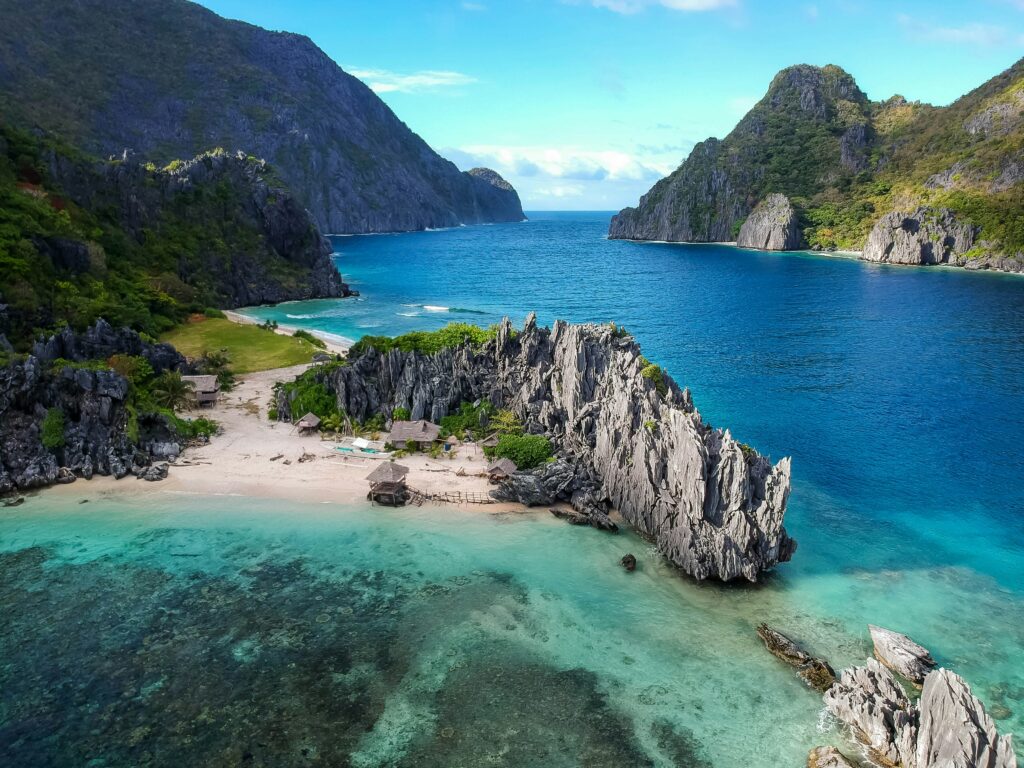
Provinces of the Philippines #22. Occidental Mindoro
📌 Overview — Why go, Top 3, Best months, Safety note, Transit
Why go: Occidental Mindoro is the quieter gateway to Apo Reef, one of the country’s clearest dive and snorkel sites. Off Sablayan, gin-clear channels and walls teem with turtles, jacks, and corals. Onshore, Pandan Island and long, uncrowded beaches keep non-divers happy. Rustic towns and coconut-fringed roads make the days feel slow and photogenic. It’s a wild-blue-coast escape that still feels undiscovered.
Top 3: Apo Reef Marine Natural Park (day trip/liveaboard from Sablayan); Pandan Island; lighthouse and coastal viewpoints at sunset.
Best months: December–May for calmer seas and better visibility.
Safety note: Open-sea crossings to Apo Reef can be choppy—check Coast Guard advisories, wear life vests, and use accredited boats.
Transit: Bus to Batangas Port → ferry to Abra de Ilog → van to Sablayan (≈4–5 hrs); or fly to San Jose (SJI) then drive north (≈2–3 hrs).
Mini-Itinerary — Occidental Mindoro
🧭 Open mini-itinerary & budget
Day 1 — Sablayan town bike; beach hours on Pandan Island; golden-hour lighthouse view.
Day 2 — Apo Reef boat day (snorkel/dive); picnic on the sand; return for seafood dinner.
Estimated daily budget: ₱3,200–5,800 (US$57–104)
Provinces of the Philippines #23. Oriental Mindoro
📌 Overview — Why go, Top 3, Best months, Safety note, Transit
Why go: Oriental Mindoro centers on Puerto Galera and the Verde Island Passage, a marine biodiversity hotspot. Snorkeling is beginner-friendly, yet advanced divers find thrilling current-swept sites. Inland, waterfalls and ridge lookouts give you green breaks between dives. The bayfront comes alive with cafés, live music, and sunset sails. It’s the closest “island weekend” from Manila that still feels tropical.
Top 3: Coral Garden & snorkeling (Puerto Galera); Tamaraw or Tukuran Falls; White Beach & Sabang bayfronts.
Best months: November–May for calmer seas and clearer water.
Safety note: Some dive/snorkel sites have strong currents—go with reputable operators and follow briefings.
Transit: Bus to Batangas Port → fastcraft to Balatero/Muelle (Puerto Galera) or ferry to Calapan then van to resorts.
Mini-Itinerary — Oriental Mindoro
🧭 Open mini-itinerary & budget
Day 1 — Island-hopping/snorkel to Coral Garden; bayfront sunset sail; live-music dinner.
Day 2 — Tukuran or Tamaraw Falls; ridge viewpoint café; beach swim before ferry out.
Estimated daily budget: ₱2,800–4,800 (US$50–86)
Provinces of the Philippines #24. Marinduque
📌 Overview — Why go, Top 3, Best months, Safety note, Transit
Why go: Marinduque is a heart-shaped island best known for the Holy Week Moriones Festival. Outside festival days, it’s a calm circuit of white-sand coves, small islands, and caves. Heritage churches and quiet towns add texture to your coastal loop. Local kitchens serve lato, adobo sa gata, and arrowroot cookies called uraro. It’s a slow-travel favorite with easy roads and generous locals.
Top 3: Maniwaya Island + Palad Sandbar; Bathala Cave system; Boac heritage streets and cathedral.
Best months: February–May for islands and sandbars; Holy Week varies by year for Moriones.
Safety note: Boat trips depend on weather; festival week is crowded—book rooms and ferries early.
Transit: Bus to Lucena (Dalahican) → ferry to Balanacan; limited direct RoRo options from Metro Manila operate seasonally.
Mini-Itinerary — Marinduque
🧭 Open mini-itinerary & budget
Day 1 — Boac heritage walk; uraro snack stop; sunset at a west-coast beach.
Day 2 — Boat to Maniwaya + Palad Sandbar; late-day Bathala Caves or island chill.
Estimated daily budget: ₱2,200–4,000 (US$39–71)
Provinces of the Philippines #25. Romblon
📌 Overview — Why go, Top 3, Best months, Safety note, Transit
Why go: Romblon spreads across three main islands—Romblon, Sibuyan, and Tablas—each with a distinct vibe. Beaches like Bonbon and Tiamban form jaw-dropping sandbars that change with the tide. Offshore, Cresta de Gallo remains one of the country’s purest day-trip islets. Hikers aim for jagged Mt. Guiting-Guiting while casual travelers beach-hop and hunt marble crafts. The feel is raw, clear, and wonderfully uncrowded.
Top 3: Bonbon Beach sandbar (Romblon Island); Cresta de Gallo (Sibuyan vicinity); Cantingas River & falls (Sibuyan).
Best months: December–May for calm seas; March–May for Guiting-Guiting weather windows.
Safety note: Inter-island boats are weather-dependent; Guiting-Guiting is a technical hike—hire certified guides.
Transit: Fly to Tablas (TBH, limited/seasonal) then boat/van transfers; or ferry from Batangas to Romblon/Tablas with local pump boats onward.
Mini-Itinerary — Romblon
🧭 Open mini-itinerary & budget
Day 1 — Bonbon & Tiamban sandbar hours; marble craft stop; sunset on the fort viewpoint.
Day 2 — Boat to Cresta de Gallo (Sibuyan side); Cantingas River dip; seafood dinner.
Estimated daily budget: ₱2,500–4,500 (US$45–80)
Provinces of the Philippines #26. Palawan
📌 Overview — Why go, Top 3, Best months, Safety note, Transit
Why go: Palawan strings world-class stops from Puerto Princesa to Port Barton, El Nido, Coron, and Balabac. Limestone karst lagoons and reefs make every boat day look cinematic. Town vibes have matured—better dining, eco-tours, and calm beach pockets between adventures. Inland rivers, mangroves, and caves add variety when seas are rough. Distances are long, but the payoffs are unforgettable island days.
Top 3: Puerto Princesa Underground River; El Nido lagoons/island-hopping; Coron kayangan lake + twin lagoons/WWII wreck snorkel.
Best months: November–May for drier weather and smoother seas.
Safety note: Boat permits and weather can change plans—monitor advisories and use accredited operators; drones need permits in protected areas.
Transit: Fly to PPS (Puerto Princesa), ENI/LIO (El Nido), USU (Busuanga/Coron) or San Vicente (SWL); connect by van/boat between hubs.
Mini-Itinerary — Palawan
🧭 Open mini-itinerary & budget
Day 1 — Underground River eco-tour; Sabang beach break; drive to El Nido or Port Barton stopover.
Day 2 — Island-hopping (El Nido or Coron focus: lagoons/lakes/reefs); sunset dinner on the bay.
Estimated daily budget: ₱3,800–6,800 (US$68–121)
Bicol Region (Region V)
Bicol pairs dramatic volcano silhouettes with surf towns, heritage sites, and island coves. Roads bend toward Mayon’s perfect cone, rice fields, and coastal viewpoints. Whale-shark seasons, long beaches, and island-hopping routes add easy variety. Spicy kitchens, pili desserts, and small cafés fuel early hikes and late swims. Travel feels best on clearer months, with storm season watched closely.
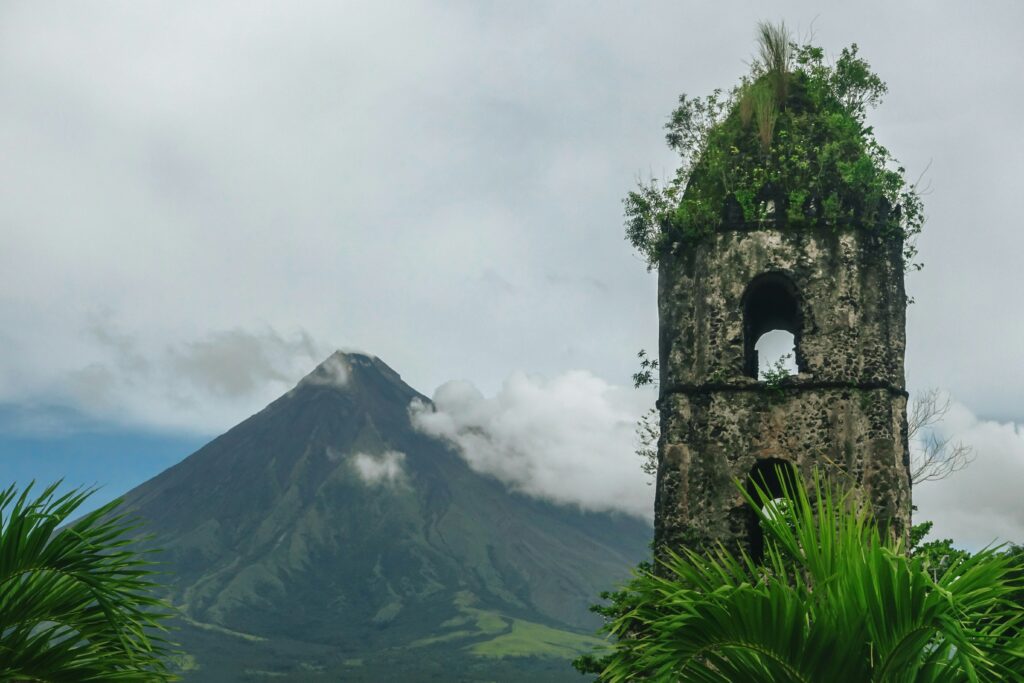
Provinces of the Philippines #27. Albay
📌 Overview — Why go, Top 3, Best months, Safety note, Transit
Why go: Albay frames every hour with the silhouette of Mayon’s near-perfect cone. Viewpoints like Cagsawa and Sumlang Lake set easy panoramas from sunrise to blue hour. Lava fields, hill ridges, and caves add texture beyond the classic ruins shot. Town cafés and cacao stops make effortless breathers between lookouts. It’s a compact loop where iconic scenery stays close and photogenic.
Top 3: Cagsawa Ruins + Mayon viewpoints; Sumlang Lake bamboo rafts; Quitinday Hills or Mayon Skyline road.
Best months: December–May for clearer Mayon views.
Safety note: Respect alert levels and no-go zones around Mayon; weather changes fast on ridges.
Transit: Fly to Legazpi (Bicol International Airport) or overnight bus from Manila; tricycles/van hires for loops.
Mini-Itinerary — Albay
🧭 Open mini-itinerary & budget
Day 1 — Cagsawa + Daraga church views; Sumlang Lake rafts; cacao/coffee stop at dusk.
Day 2 — Quitinday Hills or Mayon Skyline; urban food crawl in Legazpi; night market stroll.
Estimated daily budget: ₱2,800–5,200 (US$50–93)
Provinces of the Philippines #28. Camarines Norte
📌 Overview — Why go, Top 3, Best months, Safety note, Transit
Why go: Camarines Norte is your doorway to bright sandbars and beginner-friendly surf. Calaguas keeps powdery coves and camping vibes that feel wonderfully unplugged. Bagasbas Beach adds longboard-friendly waves and an easygoing boulevard. Inland falls and lighthouses give you breezy half-day detours. It’s an affordable, photogenic mix for first-timers and casual beach lovers.
Top 3: Calaguas Island day/camp; Bagasbas surf + boulevard café loop; Parola viewpoints and inland falls.
Best months: March–May for calmer crossings; November–February for occasional surf pulses.
Safety note: Boat rides to Calaguas depend on weather—use accredited boats and pack dry bags.
Transit: Overnight bus to Daet; or fly to Naga then 2–3 hrs by land to Daet.
Mini-Itinerary — Camarines Norte
🧭 Open mini-itinerary & budget
Day 1 — Bagasbas surf lesson + boulevard eats; sunset walk.
Day 2 — Early boat to Calaguas; sandbar hours and swim; camp or return to Daet.
Estimated daily budget: ₱2,400–4,400 (US$43–79)
Provinces of the Philippines #29. Camarines Sur
📌 Overview — Why go, Top 3, Best months, Safety note, Transit
Why go: Camarines Sur balances wake parks, waterfalls, and the island drama of Caramoan. Beginners can learn wakeboarding at CWC while hikers cool off at Isarog’s forest falls. Out on Caramoan, limestone islets and lagoons make painterly boat days. Naga’s plazas and kitchens provide a lively base between nature runs. It’s a choose-your-adventure hub with easy logistics.
Top 3: Caramoan island-hopping; Camsur Watersports Complex (CWC) wakeboarding; Mt. Isarog’s Malabsay/Panicuason area.
Best months: March–May for Caramoan crossings; December–April for drier hiking days.
Safety note: Caramoan boat routes can be limited by wind/swell—monitor advisories and start early.
Transit: Fly to Naga (WNP) or bus from Manila; vans/bancas connect to Caramoan via Sabang or alternative ports.
Mini-Itinerary — Camarines Sur
🧭 Open mini-itinerary & budget
Day 1 — CWC beginner set + café break; Naga heritage walk and plaza snacks.
Day 2 — Transfer to Caramoan; island-hopping (lagoons/white coves); sunset seafood grill.
Estimated daily budget: ₱2,600–4,800 (US$46–86)
Provinces of the Philippines #30. Catanduanes
📌 Overview — Why go, Top 3, Best months, Safety note, Transit
Why go: Catanduanes is the “Happy Island” of green headlands, boulder beaches, and surf breaks. Binurong Point paints cliff-top meadows and turquoise water in the same frame. Puraran’s classic right-hander lures surfers while casuals lounge on quiet coves. Falls and countryside chapels break up coastal drives with easy stops. It feels raw and breezy, with friendly small-town rhythm.
Top 3: Binurong Point hike; Puraran Beach surf lookouts; Maribina Falls and Virac town loop.
Best months: March–May for calmer seas; August–November for surf windows.
Safety note: Typhoon tracks often pass near—watch forecasts; cliffs and boulder shores get slippery when wet.
Transit: Fly to Virac (VRC) or ferry via Tabaco Port (Albay) to Virac/San Andres.
Mini-Itinerary — Catanduanes
🧭 Open mini-itinerary & budget
Day 1 — Binurong sunrise hike; Virac town cafés; Maribina Falls cool-down.
Day 2 — Puraran surf or cove hopping; lighthouse/chapel stop; beach dinner.
Estimated daily budget: ₱2,600–4,600 (US$46–82)
Provinces of the Philippines #31. Masbate
📌 Overview — Why go, Top 3, Best months, Safety note, Transit
Why go: Masbate is three big islands with sandbars, manta spots, and a countryside rodeo spirit. Burias and Ticao deliver white islets like Sombrero and Animasola in a single boat day. Divers drift over the Manta Bowl while casuals chase sunsets on quiet beaches. Masbate City’s Buntod Sandbar shows off silvery flats at low tide. It’s a salt-and-sun circuit with a rustic, friendly vibe.
Top 3: Burias/Ticao island-hopping (Sombrero, Animasola, Halea); Buntod Sandbar; Manta Bowl (experienced divers).
Best months: March–May for smooth crossings; April for Rodeo Masbateño (dates vary).
Safety note: Open-water sites can have current—use accredited operators; bring sun protection and dry bags.
Transit: Fly to Masbate City (MBT) or ferry via Pilar (Sorsogon)/Monreal (Ticao); hire boats for island loops.
Mini-Itinerary — Masbate
🧭 Open mini-itinerary & budget
Day 1 — Buntod Sandbar tides + city food stop; sunset promenade.
Day 2 — Burias or Ticao island-hopping (Sombrero/Animasola/Halea); seafood grill by the shore.
Estimated daily budget: ₱2,800–5,200 (US$50–93)
Provinces of the Philippines #32. Sorsogon
📌 Overview — Why go, Top 3, Best months, Safety note, Transit
Why go: Sorsogon blends wild-green lakes, pinkish beaches, and seasonal whale-shark encounters. Donsol’s community-run interaction sets the standard for ethical sightings. Bulusan Lake and volcano park slow the pace with canoes and forest trails. Matnog’s Subic/Tikling islands offer bright water and fish-pen lagoons for casual snorkeling. It’s a nature-first province with warm, organized guiding.
Top 3: Donsol whale sharks (seasonal); Bulusan Lake/park; Matnog Subic/Tikling + Juag Lagoon.
Best months: February–May for whale-shark season; December–May for calmer seas.
Safety note: Follow Donsol interaction rules strictly; lakes and trails can close in heavy rain—check advisories.
Transit: Fly to Legazpi then 1.5–3 hrs by land to Donsol/Sorsogon; or direct buses to Sorsogon City.
Mini-Itinerary — Sorsogon
🧭 Open mini-itinerary & budget
Day 1 — Donsol registration + boat for whale-shark search (AM); chill by the river; sunset barbecue.
Day 2 — Bulusan Lake canoe + forest walk; transfer to Matnog for Subic/Tikling; Juag Lagoon fish-pen stop.
Estimated daily budget: ₱3,200–5,800 (US$57–104)
Cordillera Administrative Region (CAR)
The Cordillera climbs into pine ridges, rice terraces, limestone valleys, and cool mountain towns. Morning mists lift over amphitheater terraces and winding river canyons. Trailheads, caves, and hanging cliffs bring soft adventure within short rides of plazas and cafés. Artisan coffee, woven textiles, and weekend markets color unhurried nights. Mountain weather shifts quickly, so start early and pack layers.
You can check out our full Cordillera Tourism Guide to start planning your trip.
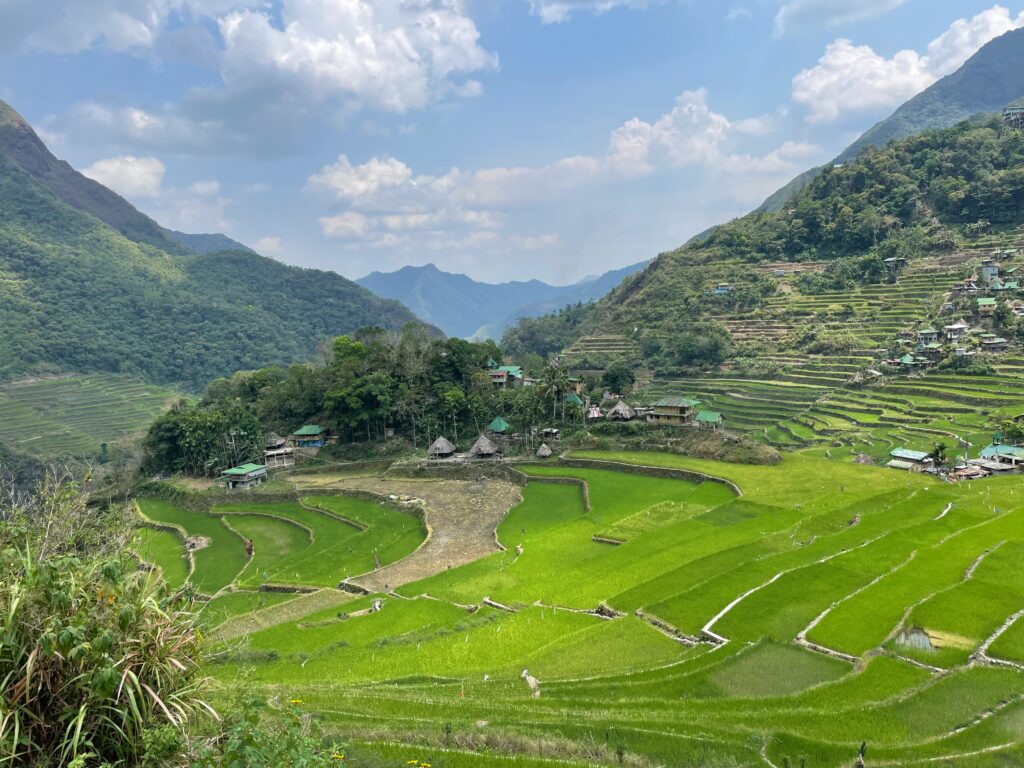
Provinces of the Philippines #33. Abra
📌 Overview — Why go, Top 3, Best months, Safety note, Transit
Why go: Abra is a mountains-and-river province where off-the-radar roads lead to big scenery. Kaparkan’s terraced cascades pour over limestone ledges in season for surreal photos. In the lowlands, Bangued’s plaza and churches anchor a relaxed heritage walk. Apao Rolling Hills and viewpoints turn late afternoons gold and breezy. Craft stops and empanada-style snacks make easy breathers between drives.
Top 3: Kaparkan (Mulawin) Falls (seasonal); Apao Rolling Hills; Abra River/Calaba Bridge sunset.
Best months: November–February for cool, drier road trips; July–October if Kaparkan is flowing (access depends on rain).
Safety note: Mountain roads can be slick or affected by landslides after heavy rain—check advisories and daylight your drives.
Transit: Overnight bus to Bangued from Manila; also reachable via Ilocos Sur (Narvacan) by land.
Mini-Itinerary — Abra
🧭 Open mini-itinerary & budget
Day 1 — Bangued heritage loop (cathedral, plaza, market); Calaba Bridge sunset by the river.
Day 2 — Early run to Kaparkan Falls (in season) or Apao Rolling Hills; roadside snack stops on return.
Estimated daily budget: ₱2,200–4,000 (US$39–71)
Provinces of the Philippines #34. Apayao
📌 Overview — Why go, Top 3, Best months, Safety note, Transit
Why go: Apayao feels truly frontier—wide rivers, green valleys, and villages tucked under forested ridges. Lussok Crystal Cave and its underground river glitter with mineral formations and clear pools. Marag Valley shelters birds and orchids, rewarding slow mornings and quiet hikes. Along the plains, the ruins of Pudtol Church link the route to old frontier stories. Simple homestays and river picnics keep the vibe unhurried and authentic.
Top 3: Lussok Crystal Cave & Underground River (Luna); Marag Valley; Pudtol Church Ruins.
Best months: December–May for drier roads and safer river levels.
Safety note: Wear life vests for cave/river sections; postpone activities after heavy rain and follow local guidance.
Transit: Long overland via Tuguegarao (Cagayan) or Laoag/Claveria corridors to Luna; expect multiple van/bus hops.
Mini-Itinerary — Apayao
🧭 Open mini-itinerary & budget
Day 1 — Lussok Cave boat + light hike; river picnic; town homestay dinner.
Day 2 — Marag Valley birding/forest walk; Pudtol Church Ruins; sunset by the riverbank.
Estimated daily budget: ₱2,600–4,800 (US$46–86)
Provinces of the Philippines #35. Benguet
📌 Overview — Why go, Top 3, Best months, Safety note, Transit
Why go: Benguet is the Cordillera’s hub where cool-air city breaks blend with high-mountain adventures. Baguio adds parks, cafés, and museums when you want culture with your pine breeze. In Atok and Kabayan, flower farms and ridge roads lay out cloud seas at sunrise. Trekkers aim for Mt. Pulag’s grassland summit for dawn light above the clouds. Between drives, strawberry fields and local markets keep the days tasty and colorful.
Top 3: Mt. Pulag (permit, guide required); Baguio parks & museums; Atok ridge/flower gardens (Haight’s/Northern Blossom).
Best months: November–February for cool city breaks; March–May for clearer mountain views.
Safety note: Nights get cold at altitude; Pulag requires permits/accredited guides; drive carefully on Halsema Highway.
Transit: 4–6 hours by bus/car to Baguio from Manila; 3–4 hours Baguio→Kabayan/Atok trailheads.
Mini-Itinerary — Benguet
🧭 Open mini-itinerary & budget
Day 1 — Baguio parks/museums + café crawl; Burnham sunset boat; night market.
Day 2 — Mt. Pulag trek (or Atok flower farms + sunrise ridges); strawberry field stop on return.
Estimated daily budget: ₱2,800–5,200 (US$50–93)
Provinces of the Philippines #36. Ifugao
📌 Overview — Why go, Top 3, Best months, Safety note, Transit
Why go: Ifugao is home to hand-carved rice terraces that flow with the mountains like amphitheaters. Batad’s stone-walled bowl feels timeless and photogenic from every angle. Hapao balances terrace walks with a steaming riverside soak amid forest. Homestays and craft cooperatives share woodcarving, weaving, and rice-wine stories. Trails are steep but close together, so each day delivers big views without long transfers.
Top 3: Batad Rice Terraces + Tappiya Falls; Banaue Viewpoints; Hapao terraces + hot spring.
Best months: November–May (drier hiking); planting/green (May–June) and harvest patterns vary by village.
Safety note: Terrace steps are steep and slippery—use guides, carry light, and respect irrigation channels and crops.
Transit: Overnight bus from Manila to Banaue; jeep/trike transfers to Batad saddle and Hapao.
Mini-Itinerary — Ifugao
🧭 Open mini-itinerary & budget
Day 1 — Banaue viewpoints; transfer to Batad; hike to Tappiya Falls; village dinner.
Day 2 — Hapao terrace walk + hot spring; craft cooperative stop; bus out in the evening.
Estimated daily budget: ₱2,800–5,200 (US$50–93)
Provinces of the Philippines #37. Kalinga
📌 Overview — Why go, Top 3, Best months, Safety note, Transit
Why go: Kalinga pairs raw mountain landscapes with strong living traditions. In Tinglayan, Buscalan welcomes visitors for guided cultural tattoos with the community of mambabatok. The Chico River offers rafting sections in season and slow afternoons by its banks. Roadside viewpoints trace the outline of Sleeping Beauty Mountain at dusk. Town kitchens serve pinuneg and smoked meats, grounding days of hikes and rides.
Top 3: Buscalan cultural visit (book accredited guides); Chico River rafting (in season); Sleeping Beauty viewpoints.
Best months: December–March for cooler, drier village walks and clearer views.
Safety note: Respect community protocols and privacy during tattoo sessions; confirm guide bookings and road conditions ahead.
Transit: Bus to Tabuk or via Baguio→Bontoc→Tinglayan; last miles to Buscalan are on foot with local guides.
Mini-Itinerary — Kalinga
🧭 Open mini-itinerary & budget
Day 1 — Transfer to Tinglayan; hike to Buscalan with guide; village orientation and dinner.
Day 2 — Morning tattoo/cultural session; Chico River spot for lunch and views; van back to Bontoc/Tabuk.
Estimated daily budget: ₱2,600–4,800 (US$46–86)
Provinces of the Philippines #38. Mountain Province
📌 Overview — Why go, Top 3, Best months, Safety note, Transit
Why go: Mountain Province centers on the cave systems, pine valleys, and calm town rhythm of Sagada. Echo Valley’s hanging coffins and limestone walls set a contemplative tone. The Sumaguing–Lumiang cave connection is an adventurous crawl of chambers and pools with accredited guides. Sunrise lookouts like Marlboro and Blue Soil hills add alien colors to morning walks. Cafés, pottery, and weaving shops make easy pauses between nature hours.
Top 3: Cave Connection (with guides); Echo Valley + hanging coffins; Marlboro/Blue Soil sunrise loop.
Best months: November–February for cool air; March–May for drier trails and starry nights.
Safety note: Enter caves only with accredited guides; respect sacred burial sites; bring layers for cold evenings.
Transit: Direct Manila–Sagada buses (Coda Lines) or via Baguio/Bontoc; local jeepneys for trailheads.
Mini-Itinerary — Mountain Province
🧭 Open mini-itinerary & budget
Day 1 — Echo Valley + hanging coffins; cave connection or Sumaguing short course; pottery/café hour.
Day 2 — Marlboro sunrise + Blue Soil walk; weaving stop; lemon pie and bus out.
Estimated daily budget: ₱2,800–5,200 (US$50–93)
Western Visayas (Region VI)
Western Visayas blends powdery islands, heritage avenues, and easy food cities. Boracay serves iconic sand and nightlife; nearby coasts stay breezy and relaxed. Iloilo’s riverfront and plazas meet Guimaras’ mango orchards and boat coves. Bacolod and Negros Occidental add art, sugar-country history, and seafood markets. Flights and ferries keep island combos simple over a long weekend.
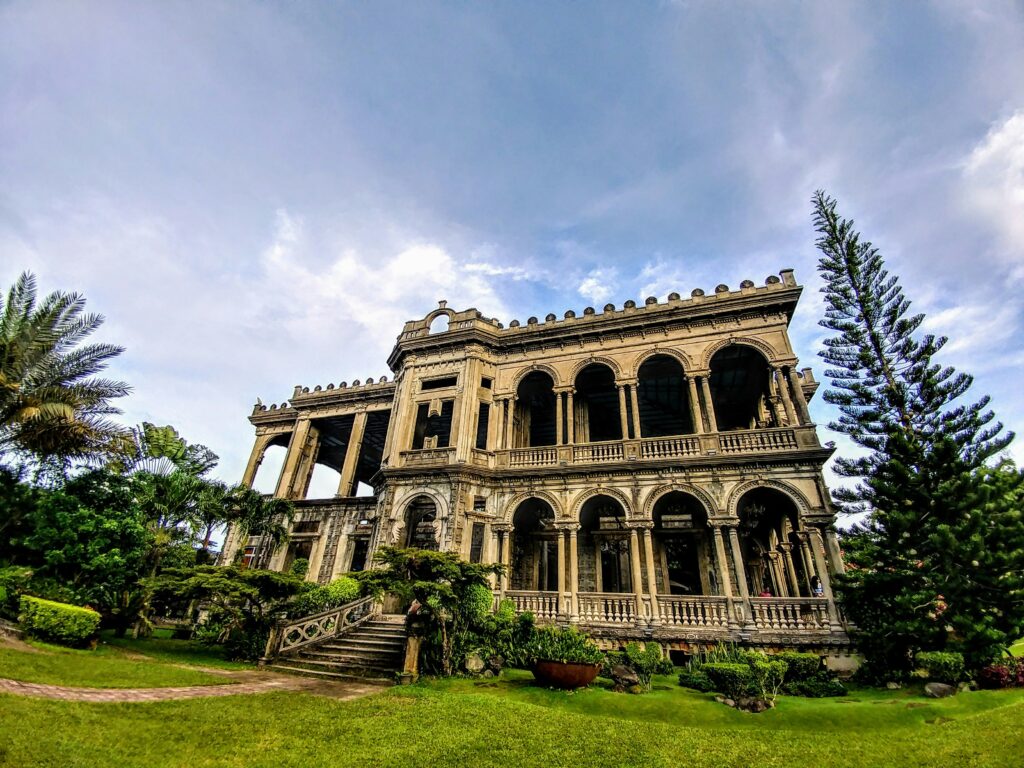
Provinces of the Philippines #39. Aklan
📌 Overview — Why go, Top 3, Best months, Safety note, Transit
Why go: Aklan is your gateway to Boracay’s powder sands and turquoise shallows that photograph like a postcard. Away from White Beach, Puka Shell and Diniwid feel quieter with rock headlands and calmer scenes. Bulabog side flips the script with kites and windsurfers tracing arcs at sunset. On the mainland, mangrove boardwalks and cold springs reset the pace between island days. January’s Ati-Atihan adds rhythm and color to Kalibo’s streets.
Top 3: Boracay White Beach + paraw sunset; Puka/Diniwid coves and Bulabog for kites; Kalibo mangrove eco-park or Ibajay mangrove forest.
Best months: November–May for drier weather; January for Ati-Atihan.
Safety note: Observe beach flags and boat lanes; during habagat season, main swim areas may shift—follow local advisories.
Transit: Fly to Caticlan (MPH) or Kalibo (KLO) → Caticlan Jetty → boat to Boracay; vans to mainland sights.
Mini-Itinerary — Aklan
🧭 Open mini-itinerary & budget
Day 1 — White Beach swim + paraw at golden hour; beachside dinner and live music.
Day 2 — Puka/Diniwid cove morning; Bulabog boardwalk and cafés; Kalibo mangrove loop (if on mainland).
Estimated daily budget: ₱3,500–6,500 (US$62–116)
Provinces of the Philippines #40. Antique
📌 Overview — Why go, Top 3, Best months, Safety note, Transit
Why go: Antique hides between sea and mountains with cold springs and clear rivers right off the highway. Tibiao’s kawa hot baths turn forest time into a cozy ritual after falls and hanging-bridge walks. Offshore, Seco Island lays out a long blond sandbar in electric-blue water. Pandan’s Bugang River and Malumpati Springs add drift-and-swim days that feel refreshingly simple. Small towns and honest food stretch the weekend without the crowds.
Top 3: Tibiao kawa hot bath + Bugtong Bato Falls; Seco Island sandbar (off Tibiao/Culasi area); Bugang River/Malumpati Springs (Pandan).
Best months: December–May for calmer seas and clearer rivers.
Safety note: Open-sea rides to Seco can be bumpy—use accredited boats and check weather; rivers rise quickly after heavy rain.
Transit: 3–5 hrs by land from Iloilo or Kalibo/Caticlan; local boats for Seco depart from Tibiao/Culasi.
Mini-Itinerary — Antique
🧭 Open mini-itinerary & budget
Day 1 — Tibiao falls + river walk; kawa hot bath; sunset seaside grill.
Day 2 — Boat to Seco Island; sandbar swim and picnic; back to town for batchoy/kakanin.
Estimated daily budget: ₱2,400–4,600 (US$43–82)
Provinces of the Philippines #41. Capiz
📌 Overview — Why go, Top 3, Best months, Safety note, Transit
Why go: Capiz is the seafood capital where market stalls turn twilight into a grill-lined promenade. Roxas City’s Baybay sets the tone with kinilaw, oysters, and scallops served right by the shore. Inland, Panay’s centuries-old church guards a famed gigantic bell and quiet cloisters. Small islands like Olotayan add a lazy beach day without complicated logistics. It’s an easy, flavor-forward stop tucked between Iloilo and Aklan.
Top 3: Baybay seafood strip (Roxas City); Panay Church and bell; Olotayan Island or Suhot Cave & Spring.
Best months: December–May for dry evenings and smoother coastal rides.
Safety note: Watch for shellfish season advisories; bring cash for market stalls and island boats.
Transit: Fly to Roxas (RXS) or bus from Iloilo/Kalibo; trikes/vans cover short hops.
Mini-Itinerary — Capiz
🧭 Open mini-itinerary & budget
Day 1 — Panay Church + heritage stop; city plaza stroll; Baybay seafood night.
Day 2 — Olotayan Island swim/snorkel or Suhot cave-and-spring; café stop before sunset.
Estimated daily budget: ₱2,200–4,000 (US$39–71)
Provinces of the Philippines #42. Guimaras
📌 Overview — Why go, Top 3, Best months, Safety note, Transit
Why go: Guimaras is the mango island with pocket coves, monastery jam stops, and easy boat hops. Ave Maria Islet and Baras Beach string together calm, green-water swims. Inland, wind farms spin over rolling fields dotted with small chapels and farm cafés. The Trappist monastery sells jams and pastries perfect for picnic kits. It’s the most effortless island day from Iloilo, with short rides and simple pleasures.
Top 3: Island-hopping to Ave Maria/Baras; Trappist Monastery products; San Lorenzo wind farm lookouts.
Best months: January–May for calmer seas; May for Manggahan Festival (dates vary).
Safety note: Wear vests on banca rides and watch currents on channel crossings; protect coral with reef-safe sunscreen.
Transit: 15–20 min boat from Iloilo City (Ortiz/Parola wharf) to Jordan/Buenavista; local trikes and boats onward.
Mini-Itinerary — Guimaras
🧭 Open mini-itinerary & budget
Day 1 — Boat to Ave Maria/Baras; picnic and swim; monastery jam and souvenir stop.
Day 2 — Wind farm viewpoints and rural cafés; lighthouse/chapel detours; sunset back in Iloilo.
Estimated daily budget: ₱2,200–4,200 (US$39–75)
Provinces of the Philippines #43. Iloilo
📌 Overview — Why go, Top 3, Best months, Safety note, Transit
Why go: Iloilo blends Spanish-era churches with a riverfront city that’s walkable and well-fed. The UNESCO-listed Miagao Church anchors a south-coast heritage drive of plazas and seaside towns. Northward, Carles unlocks the Gigantes group for limestone coves and fresh seafood banquets. The Iloilo River Esplanade adds golden-hour runs, bike loops, and café stops. Dinagyang in January wraps the city in drums, colors, and choreography.
Top 3: Miagao Church + southern heritage loop; Gigantes Islands (Carles) boat day; Iloilo River Esplanade + batchoy crawl.
Best months: November–May for islands; January for Dinagyang Festival.
Safety note: Reserve boats and permits for Gigantes; churches observe attire rules; mind midday heat on the esplanade.
Transit: Fly to Iloilo (ILO); vans/buses to Miagao (south) and to Carles (north) for Gigantes trips.
Mini-Itinerary — Iloilo
🧭 Open mini-itinerary & budget
Day 1 — Miagao + south coast plazas; seaside lunch; sunset jog or bike on the Esplanade.
Day 2 — Early van to Carles; Gigantes island-hopping and seafood feast; return to city for batchoy/merienda.
Estimated daily budget: ₱2,800–5,200 (US$50–93)
Provinces of the Philippines #44. Negros Occidental
📌 Overview — Why go, Top 3, Best months, Safety note, Transit
Why go: Negros Occidental pairs sugar-land heritage with laid-back island days on the north and south coasts. Bacolod’s cafés, museums, and The Ruins in Talisay make an easy cultural loop. Lakawon Island’s sandbar and Sipalay’s Sugar Beach craft mellow beach hours with clear water. Conservation-minded Danjugan Island shows reefs and lagoons in a guided, low-impact format. October’s MassKara lights up the streets with masks, music, and food fairs.
Top 3: The Ruins + Bacolod heritage/café crawl; Lakawon or Sipalay beach day; Danjugan Island tour (reservation-based).
Best months: November–May for beach days; October for MassKara Festival.
Safety note: Book Danjugan slots early; some southern coves have limited ATMs—carry cash; watch jellyfish advisories in summer.
Transit: Fly to Bacolod–Silay (BCD); buses/vans north to Cadiz/Lakawon or south to Sipalay/Hinoba-an.
Mini-Itinerary — Negros Occidental
🧭 Open mini-itinerary & budget
Day 1 — Bacolod heritage loop + The Ruins; café/chicken inasal dinner; Capitol Park stroll.
Day 2 — Lakawon day trip or Sipalay beach hours; optional Danjugan conservation tour; seafood sunset.
Estimated daily budget: ₱2,600–5,000 (US$46–89)
Central Visayas (Region VII)
Central Visayas is compact but loaded: reefs and beaches, waterfalls and rivers, cities and island suburbs. Cebu anchors flights, food crawls, and history walks before you branch to coasts. Bohol brings Chocolate Hills, tarsier sanctuaries, and calm, clear bays; Siquijor offers quiet beaches and a mystical vibe. Negros Oriental adds diving, lake viewpoints, and mountain springs. Transfers are short, so you can stack two or three styles in one trip.
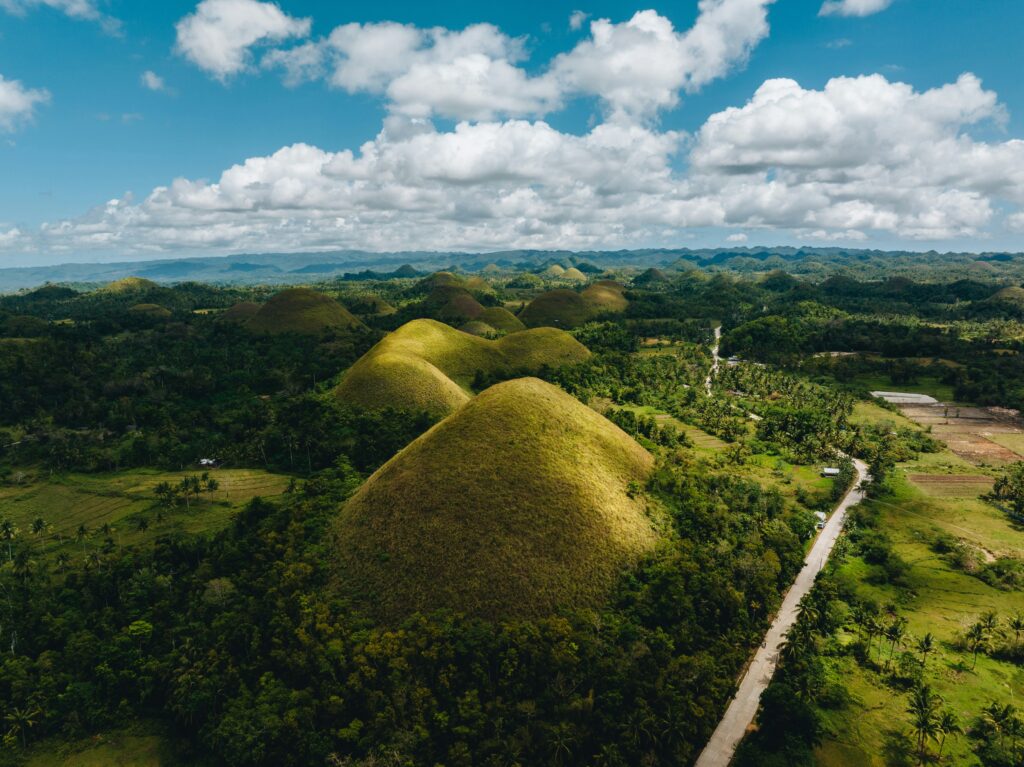
Provinces of the Philippines #45. Bohol
📌 Overview — Why go, Top 3, Best months, Safety note, Transit
Why go: Bohol blends surreal Chocolate Hills with calm rivers, heritage churches, and white-sand coves. Panglao’s house reefs and easy island hops keep water days simple for beginners. The Tarsier Sanctuary offers a respectful look at one of the world’s smallest primates. Loboc’s riverside scene adds cruises, paddleboards, and evening firefly runs. Compact distances make it a smooth two-to-three-day circuit.
Top 3: Chocolate Hills viewpoints; Balicasag + Virgin Island hop from Panglao; Tarsier Sanctuary + Loboc River cruise.
Best months: December–May for clearer skies and calmer seas.
Safety note: No flash/quiet voices at the Tarsier Sanctuary; use reef-safe sunscreen and mind currents on snorkel drifts.
Transit: Fly to TAG (Bohol–Panglao) or ferry from Cebu to Tagbilaran; vans/trikes for short hops.
Mini-Itinerary — Bohol
🧭 Open mini-itinerary & budget
Day 1 — Chocolate Hills sunrise; Tarsier Sanctuary; Loboc paddle/river cruise at dusk.
Day 2 — Balicasag + Virgin Island hop; Panglao café crawl; beach sunset swim.
Estimated daily budget: ₱3,000–5,500 (US$54–98)
Provinces of the Philippines #46. Cebu
📌 Overview — Why go, Top 3, Best months, Safety note, Transit
Why go: Cebu mixes city heritage with south-coast waterfalls, reefs, and ridgeline hikes. Moalboal’s sardine run swirls right off the beach with frequent turtle sightings. Canyoneering to Kawasan Falls adds an aqua-blue obstacle course through limestone canyons. Up high, Osmeña Peak delivers craggy sunrise views without a long approach. Food is excellent end-to-end, from lechon to seaside grills.
Top 3: Moalboal sardine run + turtles; Kawasan canyoneering; Cebu City heritage loop (Magellan’s Cross, Basilica, Fort San Pedro).
Best months: December–May for clearer water and safer canyon conditions.
Safety note: Book accredited guides for canyoneering; respect marine life (no touching/feeding) and watch boat lanes on house reefs.
Transit: Fly to CEB (Mactan); buses/vans to Moalboal/Badian/Osmeña Peak; city sites via Grab/taxis.
Mini-Itinerary — Cebu
🧭 Open mini-itinerary & budget
Day 1 — Cebu City heritage stroll; lechon lunch; sunset tops or SRP bay walk.
Day 2 — Moalboal sardine run + turtles; Kawasan canyoneering (or falls view only); seaside dinner.
Estimated daily budget: ₱2,800–5,200 (US$50–93)
Provinces of the Philippines #47. Negros Oriental
📌 Overview — Why go, Top 3, Best months, Safety note, Transit
Why go: Negros Oriental revolves around university-town Dumaguete, where cafés face a palm-lined boulevard. Apo Island’s turtle sanctuary delivers effortless snorkels over lively coral gardens. Inland, the Twin Lakes of Balinsasayao and Danao cool the afternoon with forest views and canoe time. Casaroro Falls adds a photogenic plunge pool beneath a narrow canyon. North in Bais, boats search for dolphins en route to the Manjuyod Sandbar.
Top 3: Apo Island turtle snorkel; Twin Lakes Balinsasayao–Danao; Bais dolphin watch + Manjuyod Sandbar (tide-dependent).
Best months: December–May for calmer seas and clearer lake days.
Safety note: Expect currents on Apo Island—use vests/spotters; sandbar appears at low tide; watch slippery steps at Casaroro.
Transit: Fly to Dumaguete (DGT) or ferry from Cebu; vans to Dauin/Apo jump-off and to Bais/Twin Lakes.
Mini-Itinerary — Negros Oriental
🧭 Open mini-itinerary & budget
Day 1 — Apo Island snorkel (AM); boulevard merienda; sunset at Rizal Boulevard.
Day 2 — Twin Lakes canoe + view decks; Casaroro Falls option; or Bais dolphins + Manjuyod (tide check).
Estimated daily budget: ₱2,600–4,800 (US$46–86)
Provinces of the Philippines #48. Siquijor
📌 Overview — Why go, Top 3, Best months, Safety note, Transit
Why go: Siquijor is a petite road-trip island where falls, coves, and sunsets are minutes apart. Cambugahay’s tiered pools invite long swims and rope-swing photos. Paliton lays out a palm-lined horizon that glows at golden hour. Cave and cliff-jump options spice up a lazy beach loop. The island’s mystical aura adds a gentle hush to evenings under bright stars.
Top 3: Cambugahay Falls; Paliton Beach sunset; Salagdoong cliff jump or Cantabon Cave (with guides).
Best months: February–May for the calmest seas and driest roads.
Safety note: Roads get dark after sunset—ride cautiously; cliffs and wet rock are slippery; respect sacred trees and chapels.
Transit: Ferries from Dumaguete/Tagbilaran/Cebu to Siquijor or Larena; rent scooters or hire trikes for the loop.
Mini-Itinerary — Siquijor
🧭 Open mini-itinerary & budget
Day 1 — Cambugahay morning swim; Lazi church/convent stop; Paliton Beach sunset and dinner.
Day 2 — Salagdoong cliff jumps or Cantabon Cave; coastal café loop; hammock time by the shore.
Estimated daily budget: ₱2,200–4,200 (US$39–75)
Eastern Visayas (Region VIII)
Eastern Visayas stretches across Samar, Leyte, and Biliran with bridges, bays, and forested interiors. River caves and stone arches tuck behind palm-lined highways and fishing towns. Sandbars, waterfalls, and WWII landmarks layer history with island scenes. The big bridge spans make road trips feel cinematic and easy. Clearer months are best; always track weather for island hops.
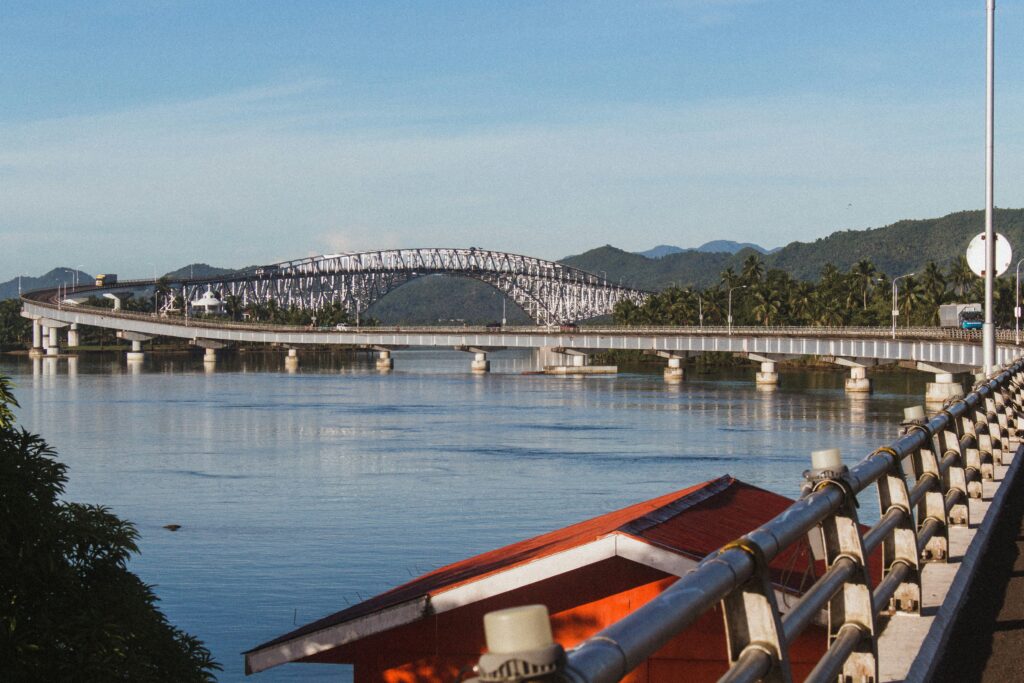
Provinces of the Philippines #49. Biliran
📌 Overview — Why go, Top 3, Best months, Safety note, Transit
Why go: Biliran is a compact island-province ringed by quiet beaches and stacked with waterfalls. The star is Sambawan’s volcanic islets near Maripipi, where ridgeline views fall into neon water. Inland, cascades like Tinago and Ulan-Ulan create shady swim spots minutes from the highway. Fishing towns feel friendly and unhurried, perfect for slow road trips. Distances are short, so you can link mountains, coves, and towns in a single day.
Top 3: Sambawan Island & Maripipi viewpoints; Tinago Falls; Ulan-Ulan/Recoletos Falls combo.
Best months: December–May for calm seas and clearer trails.
Safety note: Rocks are slick at falls; sea crossings to Maripipi/Sambawan depend on weather—use accredited boats and bring dry bags.
Transit: Fly to Tacloban (TAC) → van to Naval (Biliran capital) → local boat to Maripipi; ferries also run via Ormoc/Cebu routes to nearby ports.
Mini-Itinerary — Biliran
🧭 Open mini-itinerary & budget
Day 1 — Tinago + Ulan-Ulan Falls loop; coastal merienda; sunset on the ring road.
Day 2 — Boat to Sambawan; ridge hike and snorkel; seafood dinner in Naval.
Estimated daily budget: ₱2,200–4,200 (US$39–75)
Provinces of the Philippines #50. Eastern Samar
📌 Overview — Why go, Top 3, Best months, Safety note, Transit
Why go: Eastern Samar faces the Pacific with surf breaks, cliffy points, and wide, wind-brushed beaches. Calicoan Island near Guiuan dishes consistent waves and sunrise horizons. Around Borongan, little islets and river mouths set easy day trips with a small-town vibe. Heritage churches and WWII sites add quiet reflection between coves. The scene is authentic and uncrowded, ideal for explorers and surfers.
Top 3: Calicoan Island (ABCD Beach) surf; Divinubo/Ando Island hops (Borongan); Sulangan Church + Guiuan coastal drive.
Best months: March–May for calmer seas; August–November for stronger surf windows.
Safety note: Respect rip currents on open Pacific beaches; this coast sits on common typhoon paths—watch forecasts and local advisories.
Transit: Fly to Tacloban (TAC) → 3–4 hrs by land to Borongan/Guiuan; limited regional flights may operate seasonally.
Mini-Itinerary — Eastern Samar
🧭 Open mini-itinerary & budget
Day 1 — Calicoan sunrise surf or beach walk; Sulangan Church; seafood lunch by the shore.
Day 2 — Borongan river + Divinubo/Ando hop; boulevard merienda; dusk on a cliff viewpoint.
Estimated daily budget: ₱2,400–4,600 (US$43–82)
Provinces of the Philippines #51. Leyte
📌 Overview — Why go, Top 3, Best months, Safety note, Transit
Why go: Leyte mixes island days, a record-long bridge, and sobering WWII landmarks. Kalanggaman near Palompon lays out bone-white sandbars in transparent water. San Juanico Bridge links Samar and Leyte with elegant curves and sunset views. Inland, Lake Danao above Ormoc cools the afternoon with breezy ridges and canoe time. Tacloban’s museums and memorials round out a meaningful stop.
Top 3: Kalanggaman Island (Palompon); San Juanico Bridge + Tacloban city loop; Lake Danao NP (Ormoc).
Best months: December–May for calmer seas and bridge/lake sunsets.
Safety note: Kalanggaman slots/boats are limited—pre-book; carry sun protection and mind currents off the sandbar edges.
Transit: Fly to Tacloban (TAC) or ferry to Ormoc; vans to Palompon for Kalanggaman and to Ormoc highlands for Lake Danao.
Mini-Itinerary — Leyte
🧭 Open mini-itinerary & budget
Day 1 — Kalanggaman island day (pre-booked); sandbar swim/snorkel; dinner in Palompon/Ormoc.
Day 2 — San Juanico Bridge viewpoints + Tacloban heritage/museums; Lake Danao breeze stop.
Estimated daily budget: ₱2,400–4,600 (US$43–82)
Provinces of the Philippines #52. Northern Samar
📌 Overview — Why go, Top 3, Best months, Safety note, Transit
Why go: Northern Samar feels elemental—basalt cliffs, pounding surf, and lonely lighthouses. Biri’s rock formations rise like sculptures from tide pools that glow at low tide. Capul’s lighthouse and stone church sit over a channel once used by galleons. Dalupiri’s beaches soften the mood with palms and quiet villages. The routes between towns are photogenic, with sea views and coconut plains.
Top 3: Biri Island rock formations (via Lavezares); Capul Island lighthouse + heritage; Dalupiri (San Antonio) island beaches.
Best months: March–May for the calmest crossings; wave-watching windows appear October–February.
Safety note: Tide and swell dictate Biri access—time visits for low tide and heed guide advice; channel crossings can be rough.
Transit: Fly to Catarman (limited) or bus via Allen/Calbayog; bangkas from Lavezares to Biri and from Allen/Matnog area to Capul.
Mini-Itinerary — Northern Samar
🧭 Open mini-itinerary & budget
Day 1 — Boat to Biri; low-tide walk among Magasang/Bel-at pools; seafood back in town.
Day 2 — Capul heritage + lighthouse; optional Dalupiri beach hours; ferry connections onward.
Estimated daily budget: ₱2,400–4,600 (US$43–82)
Provinces of the Philippines #53. Samar
📌 Overview — Why go, Top 3, Best months, Safety note, Transit
Why go: Samar is a playground of caves, rivers, and forest bridges anchored by small heritage towns. Basey’s Sohoton Caves and Natural Bridge Park mix cathedral chambers with jungle boat rides. In Paranas, the Ulot River “torpedo boat” run is a grin-inducing ride over riffles and pools. Lulugayan Falls fans out into a wide, photogenic curtain after rainy spells. Between adventures, San Juanico sunsets and market snacks keep things local and easy.
Top 3: Sohoton Cave & Natural Bridge (Basey); Ulot River torpedo boat (Paranas); Lulugayan Falls (Calbiga).
Best months: December–May for steadier cave/river access and friendlier currents.
Safety note: Helmets and vests are standard for cave/river tours; postpone activities after heavy rains due to rising water.
Transit: Fly to Tacloban (TAC) then cross San Juanico to Basey/Paranas/Calbiga; or buses direct to Catbalogan/Calbayog hubs.
Mini-Itinerary — Samar
🧭 Open mini-itinerary & budget
Day 1 — Sohoton cave + natural bridge boat; Basey banig weaving stop; dusk by San Juanico.
Day 2 — Ulot River torpedo run; Lulugayan Falls photo hour; seafood dinner in Catbalogan.
Estimated daily budget: ₱2,400–4,600 (US$43–82)
Provinces of the Philippines #54. Southern Leyte
📌 Overview — Why go, Top 3, Best months, Safety note, Transit
Why go: Southern Leyte curves around Sogod Bay where turtles, reefs, and seasonal whale sharks gather. Pintuyan’s ethical interaction program keeps sightings calm and well-managed. Snorkelers love Napantao’s reefs while hikers seek breezy lookouts above Maasin and Sogod. Limasawa Island adds beaches and quiet historic markers. Roads are scenic and uncrowded, making transfers part of the pleasure.
Top 3: Pintuyan/Sogod Bay whale-shark search (seasonal, ethical); Napantao sanctuary snorkel; Limasawa Island day trip.
Best months: January–May for whale-shark windows and calm seas.
Safety note: Follow strict interaction rules (no touching/feeding/flash); channel crossings get windy—use proper vests and operators.
Transit: Fly to Tacloban (TAC) then van to Maasin/Sogod; ferries also connect via Liloan (San Ricardo) from Mindanao.
Mini-Itinerary — Southern Leyte
🧭 Open mini-itinerary & budget
Day 1 — Pintuyan whale-shark briefing + search; coastal lunch; Maasin viewpoint or river swing.
Day 2 — Napantao reef snorkel; Limasawa island swim + heritage stop; seafood dinner on the bay.
Estimated daily budget: ₱2,400–4,600 (US$43–82)
Zamboanga Peninsula (Region IX)
Zamboanga Peninsula is a mix of Spanish-era forts, bright markets, and coves along a long coastline. City promenades face sunset bays while upland roads reveal cold springs and farm cafés. Offshore, island day trips add reefy swims and casual grills. Regional kitchens turn out seafood and famous crab dishes alongside heirloom sweets. Plan boat days around weather and enjoy slow urban-to-sea transitions.
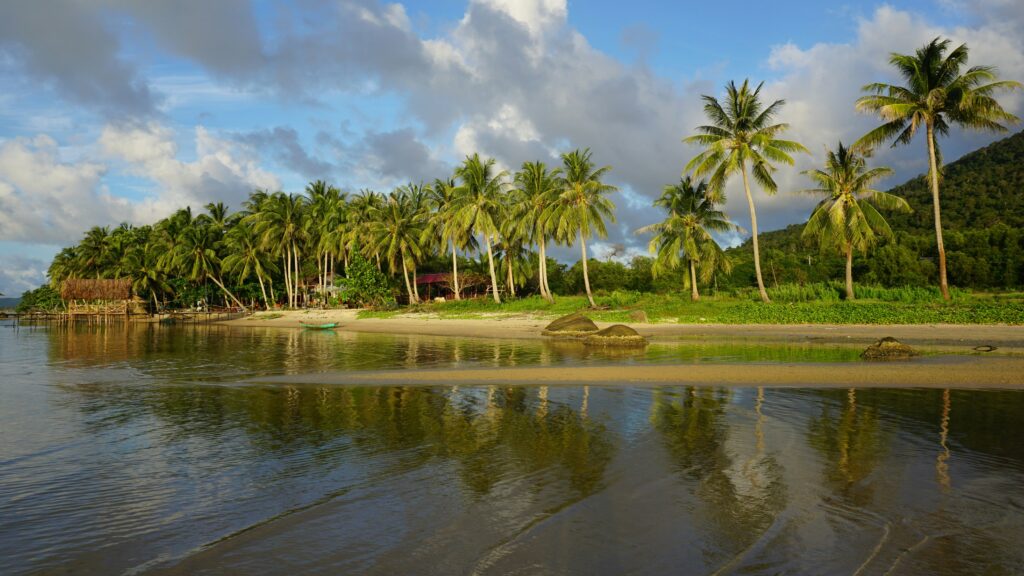
Provinces of the Philippines #55. Sulu
📌 Overview — Why go, Top 3, Best months, Safety note, Transit
Why go: Sulu stretches across jewel-toned islands between reefs and volcanic ridges. Jolo’s mosques and markets thread Tausug flavors through busy streets. Offshore, white-sand islets and turquoise channels shape dreamy boat days. Sea breezes, coconut groves, and fish grills keep afternoons unrushed. Local crafts and songs make evenings feel intimate and rooted.
Top 3: Jolo heritage/market loop; island-hopping to nearby reefy islets; coastal viewpoints and seaside mosques.
Best months: February–May for smoother crossings and brighter water.
Safety note: Coordinate movements with LGU/tourism and use accredited boats/guides; follow cultural protocols and current security advisories.
Transit: Typical approach via Zamboanga City → boats/fastcraft to Jolo; local boats for island hops when cleared.
Mini-Itinerary — Sulu
🧭 Open mini-itinerary & budget
Day 1 — Jolo market + mosque trail; seaside merienda; sunset viewpoint.
Day 2 — Island-hopping (permits, accredited boats); snorkel/sandbar time; grill dinner back in town.
Estimated daily budget: ₱2,800–5,400 (US$50–98)
Provinces of the Philippines #56. Zamboanga del Norte
📌 Overview — Why go, Top 3, Best months, Safety note, Transit
Why go: Zamboanga del Norte blends coastal islands with a storied heritage in Dapitan. Rizal Shrine and the Spanish plaza keep history close to tree-lined bays and calm waterfronts. Offshore, Aliguay and Selinog lay out white-sand rings and crystal shallows for easy snorkeling. Dipolog’s boulevard sunsets pair well with seafood markets and coffee stops. Drives between towns are scenic and uncrowded, perfect for relaxed pacing.
Top 3: Dapitan heritage loop + Rizal Shrine; Aliguay/Selinog island hop (from Dapitan/Dipolog); Dipolog Sunset Boulevard.
Best months: December–May for calmer crossings and drier walks.
Safety note: Confirm boat availability/permits for islands; swim within marked areas and heed local advisories.
Transit: Fly to Dipolog (DPL); 20–40 min by land to Dapitan; boats to Aliguay/Selinog operate from local ports.
Mini-Itinerary — Zamboanga del Norte
🧭 Open mini-itinerary & budget
Day 1 — Dapitan plaza + Rizal Shrine; sunset by the bay; seafood night market.
Day 2 — Boat to Aliguay or Selinog; snorkel and sandbar hours; café stop in Dipolog.
Estimated daily budget: ₱2,600–4,800 (US$46–86)
Provinces of the Philippines #57. Zamboanga del Sur
📌 Overview — Why go, Top 3, Best months, Safety note, Transit
Why go: Zamboanga del Sur offers highland lakes, rivers, and bays framed by rolling hills. Pagadian’s sloped streets and tricycles lead to lookouts over Iligan Bay. Lakewood’s glassy water reflects pines and ridges, ideal for kayak laps and slow mornings. Tukuran’s clear river runs to small falls and natural pools for family-friendly swims. The routes knit together photogenic rest stops without long transfers.
Top 3: Lakewood kayak + viewpoints; Tukuran river and falls; Pagadian ridge/bay lookouts and markets.
Best months: December–May for steadier lake days and clearer roads.
Safety note: Expect slippery trails near rivers; check local road and weather updates before mountain drives.
Transit: Fly to Pagadian (PAG) or bus from CDO/Dipolog; vans to Lakewood/Tukuran operate from city terminals.
Mini-Itinerary — Zamboanga del Sur
🧭 Open mini-itinerary & budget
Day 1 — Lakewood sunrise paddle; ridge café; Pagadian baywalk at dusk.
Day 2 — Tukuran river trail + swim; market lunch; short heritage stops in town.
Estimated daily budget: ₱2,200–4,200 (US$39–75)
Provinces of the Philippines #58. Zamboanga Sibugay
📌 Overview — Why go, Top 3, Best months, Safety note, Transit
Why go: Zamboanga Sibugay is a palm-fringed coast dotted with sandbars and fishing villages. Buluan Island near Ipil offers bright, shallow water and an easy beach day. Farther down the coast, Pandilusan and other small islands keep the vibe unplugged and photogenic. Mangrove-lined creeks and quiet markets make for slow, local afternoons. It’s a simple seaside loop best enjoyed with unhurried pacing and fresh seafood.
Top 3: Buluan Island beach day (Ipil); Pandilusan/nearby islets (Payao area); mangrove boardwalks and coastal markets.
Best months: December–May for the calmest seas and clearer water.
Safety note: Boat rides depend on weather—use accredited operators, life vests, and check tide/wind before departing.
Transit: Fly to Pagadian/Zamboanga or Dipolog, then bus/van to Ipil (provincial hub); arrange boats locally.
Mini-Itinerary — Zamboanga Sibugay
🧭 Open mini-itinerary & budget
Day 1 — Buluan Island swim and sandbar walks; seafood picnic; golden-hour banca ride back.
Day 2 — Mangrove boardwalk morning; boat to Pandilusan/nearby islets; sunset by the pier.
Estimated daily budget: ₱2,200–4,200 (US$39–75)
Northern Mindanao (Region X)
Northern Mindanao lines up rafting rivers, highland farms, island sandbars, and waterfall cities. Cagayan de Oro is an easy base for rapids and food nights. Bukidnon’s piney ridges and cool valleys pair ziplines with coffee stops. Camiguin adds hot springs, waterfalls, and postcard sandbars minutes apart. Westward, Iligan’s falls and Misamis coastal parks round out a full, flexible loop.
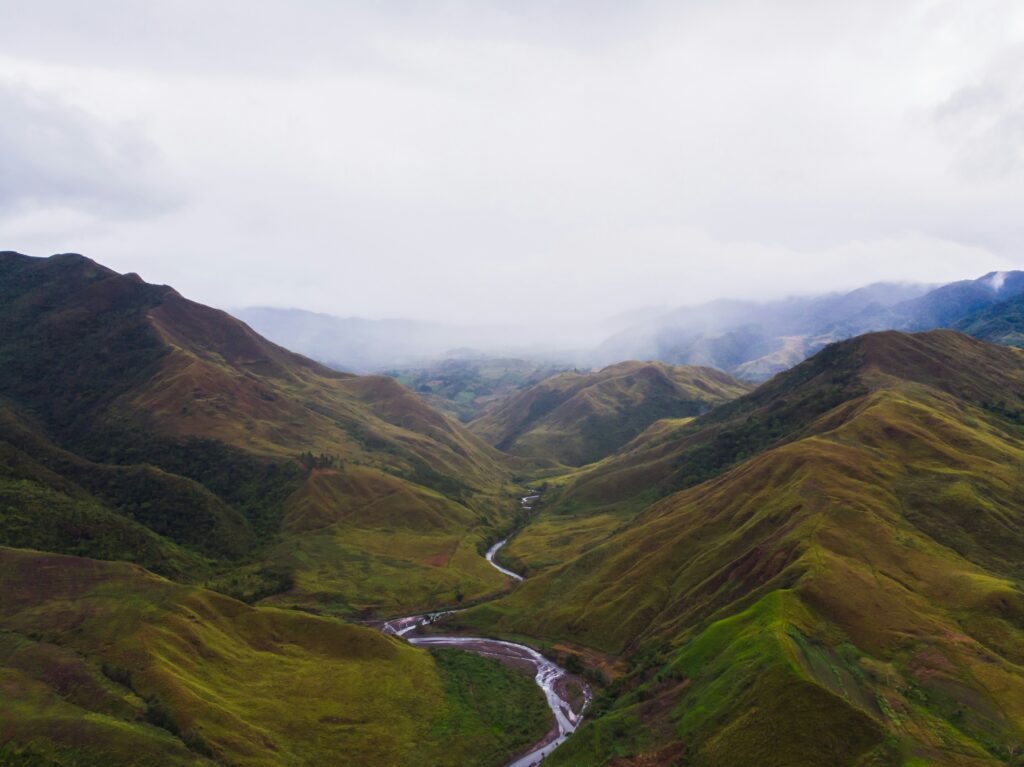
Provinces of the Philippines #59. Bukidnon
📌 Overview — Why go, Top 3, Best months, Safety note, Transit
Why go: Bukidnon rolls out piney highlands, flower farms, and zipline playgrounds perfect for fresh-air weekends. Dahilayan’s luge and canopy rides add just-right thrills for families and first-timers. Lake Apo mirrors green hills that feel a world away from city heat. Indigenous crafts and coffee stops dot the roads between Malaybalay and Manolo Fortich. Cool nights and sunrise ridges make early starts easy and rewarding.
Top 3: Dahilayan Adventure Park; Lake Apo viewpoints; Kampo Juan hanging bridge or Mt. Kitanglad foothill trails (with guides).
Best months: November–April for drier roads and crisp mornings.
Safety note: Mountain weather shifts fast—carry layers; major peaks need permits and accredited guides; drive cautiously on foggy ridges.
Transit: Fly to Cagayan de Oro (CGY/Laguindingan) then 1.5–3 hrs by land to Manolo Fortich/Malaybalay; also reachable from Davao by bus/van.
Mini-Itinerary — Bukidnon
🧭 Open mini-itinerary & budget
Day 1 — Dahilayan rides (zipline/luge) + ridge café; golden-hour photo stops.
Day 2 — Lake Apo morning circuit; Kampo Juan hanging bridge or farm café loop; pasalubong coffee stop.
Estimated daily budget: ₱2,400–4,600 (US$43–82)
Provinces of the Philippines #60. Camiguin
📌 Overview — Why go, Top 3, Best months, Safety note, Transit
Why go: Camiguin is an easy island loop where springs, waterfalls, and sandbars sit minutes apart. White Island paints a perfect sandbar against the slopes of Hibok-Hibok. Mantigue adds reef-rimmed snorkeling and shaded beach picnics. The Sunken Cemetery offers moody sunset frames and calm snorkel sections nearby. Evenings are quiet, starry, and made for fresh seafood and coco pie.
Top 3: White Island sandbar; Mantigue Island snorkel; Sunken Cemetery + old church ruins or Hibok-Hibok trek (permit, guide).
Best months: February–May for the calmest seas and clear views.
Safety note: Strong sun and tide on sandbars—pack water and reef-safe sunscreen; Hibok-Hibok requires registration and a guide.
Transit: Fly to Camiguin (CGM) from Cebu/Manila (select schedules) or ferry via Balingoan (Misamis Oriental) to Benoni; tricycle/multicab around the loop.
Mini-Itinerary — Camiguin
🧭 Open mini-itinerary & budget
Day 1 — White Island sunrise; Katibawasan Falls; Ardent hot spring night dip.
Day 2 — Mantigue snorkel + beach picnic; Sunken Cemetery at golden hour; seafood dinner by the bay.
Estimated daily budget: ₱2,600–4,800 (US$46–86)
Provinces of the Philippines #61. Lanao del Norte
📌 Overview — Why go, Top 3, Best months, Safety note, Transit
Why go: Lanao del Norte is waterfall country anchored by Iligan City’s dramatic river systems. Maria Cristina thunders through a gorge while Tinago hides a deep blue basin reached by steep steps. Timoga’s free-flow pools and leafy boulevards slow the pace after hikes. Coastal drives reveal markets, sea views, and breezy promenades. The mix is practical, photogenic, and easy to link in a day or two.
Top 3: Maria Cristina Falls viewpoint complex; Tinago Falls swim; Timoga cold springs + baywalk.
Best months: December–May for steadier flows and friendlier trail conditions.
Safety note: Observe barriers at power/industrial zones; steps to Tinago are steep and slippery—use proper footwear and pace your ascent.
Transit: Fly to Cagayan de Oro (CGY) then 1.5–2.5 hrs by land to Iligan; buses also run from Pagadian/Ozamiz.
Mini-Itinerary — Lanao del Norte
🧭 Open mini-itinerary & budget
Day 1 — Maria Cristina viewing decks + museum; coastal lunch; Timoga pools at dusk.
Day 2 — Tinago Falls swim and photo hour; light heritage/market stroll; coffee by the bay.
Estimated daily budget: ₱2,200–4,200 (US$39–75)
Provinces of the Philippines #62. Misamis Occidental
📌 Overview — Why go, Top 3, Best months, Safety note, Transit
Why go: Misamis Occidental strings together bay views, hilltop lookouts, and small-town heritage. Tangub’s Hoyohoy Highlands rolls out pine ridges and broad vistas perfect for cool mornings. In Sinacaban, the Misamis Occidental Aquamarine Park showcases mangroves and a protected marine area. Ozamiz’s Cotta Fort and lighthouse add history to sunset hours along the port. The coastal ring road stays scenic and relaxed for easy road trips.
Top 3: Hoyohoy Highlands viewpoints (Tangub); Misamis Occidental Aquamarine Park (Sinacaban); Cotta Fort & lighthouse (Ozamiz).
Best months: December–May for clearer skies and calmer seas.
Safety note: Hill roads can fog up—use low beams; confirm marine-park schedules and always wear vests on boat segments.
Transit: Fly to Ozamiz (OZC); short land hops to Tangub/Sinacaban/Oroquieta via jeep/van.
Mini-Itinerary — Misamis Occidental
🧭 Open mini-itinerary & budget
Day 1 — Hoyohoy sunrise ridge; café in Tangub; Ozamiz bay sunset at Cotta.
Day 2 — MisOcc Aquamarine Park mangrove + marine stop; Oroquieta boulevard stroll; seafood lunch.
Estimated daily budget: ₱2,200–4,200 (US$39–75)
Provinces of the Philippines #63. Misamis Oriental
📌 Overview — Why go, Top 3, Best months, Safety note, Transit
Why go: Misamis Oriental is the springboard to whitewater rafting, coastal sanctuaries, and easy city comforts. Cagayan de Oro’s river runs deliver fun rapids with pro guides and quick logistics. Westward, Initao-Libertad Park mixes sea cliffs, caves, and snorkel coves. Jasaan’s Agutayan White Island adds a sandbar and shallow reef for calm swims. With Camiguin just a ferry away, you can build a flexible multi-island loop.
Top 3: Cagayan de Oro whitewater rafting; Initao-Libertad Protected Landscape/Seascape; Agutayan White Island (Jasaan) marine sanctuary.
Best months: December–May for steadier seas and friendlier rafting weather.
Safety note: Rafting requires helmets/vests—listen to guides; cliffs and caves at Initao can be slippery; observe marine-sanctuary rules on Agutayan.
Transit: Fly to Cagayan de Oro (CGY/Laguindingan); vans/buses run west to Initao/Jasaan and north to Balingoan for Camiguin ferries.
Mini-Itinerary — Misamis Oriental
🧭 Open mini-itinerary & budget
Day 1 — CDO heritage corner + whitewater rafting (PM run); riverside dinner.
Day 2 — Initao cliff/cave + cove swim; Agutayan White Island (tide check) or quick hop to Camiguin.
Estimated daily budget: ₱2,600–4,800 (US$46–86)
Davao Region (Region XI)
Davao Region stacks a modern gateway city against mountains, islands, and long Pacific beaches. Samal and Talicud serve bright reefs and boat days minutes from shore. Inland, Mt. Apo’s slopes host farm cafés, view parks, and permit treks. Mati’s Dahican Beach wakes up to sunrise surf and skim sessions. Fruit stands, cacao stops, and smooth highways make transfers easy.
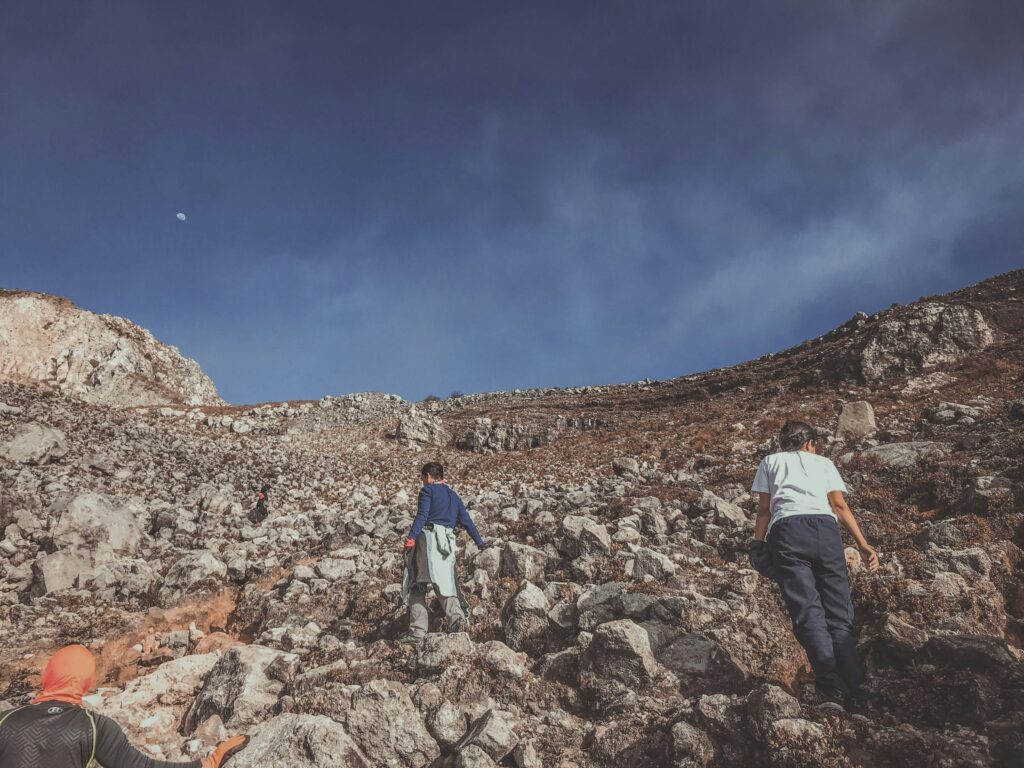
Provinces of the Philippines #64. Davao de Oro
📌 Overview — Why go, Top 3, Best months, Safety note, Transit
Why go: Davao de Oro trades mega-hubs for cool mountain air and river-valley towns. Maragusan clusters waterfalls and pocket hot springs within short, leafy drives. View decks open to cloud seas at sunrise and garden ridges by mid-morning. Markets brim with cacao, coffee, and fruit between soft-adventure stops. It’s an easy, under-the-radar loop for road-trippers who like green views and quiet nights.
Top 3: Maragusan waterfall circuit (Tagbibinta/Marangig); thermal spring soaks; Mt. Candalaga or Kaimonan sunrise viewpoints.
Best months: December–April for drier roads and clearer mornings.
Safety note: Mountain rains can trigger slippery trails—daylight your drives, wear grippy footwear, and heed LGU advisories.
Transit: Fly to Davao (DVO) → vans/buses to Nabunturan/Maragusan (3–5 hrs) or private car for flexible stops.
Mini-Itinerary — Davao de Oro
🧭 Open mini-itinerary & budget
Day 1 — Maragusan waterfalls + hot spring; cacao/coffee stop; sunset view deck.
Day 2 — Early ridge viewpoint; garden strolls; slow lunch before drive back to Davao.
Estimated daily budget: ₱2,400–4,600 (US$43–82)
Provinces of the Philippines #65. Davao del Norte
📌 Overview — Why go, Top 3, Best months, Safety note, Transit
Why go: Davao del Norte is your launchpad to Samal and Talicud’s bright beaches and reefs. Tagum City balances riverfront promenades, music hubs, and café stops. Hagimit Falls and Kaputian coves keep water hours relaxed between boat days. Banana plains and coastal roads make transfers photogenic and easy. It’s island-hopping energy with city comforts within an hour or two.
Top 3: Samal/Talicud island-hopping; Hagimit Falls + Kaputian Beach; Tagum River cruise and music/arts stops.
Best months: December–May for calmer seas and sunniest boat days.
Safety note: Observe marine sanctuaries and boat lanes; watch for jellyfish during hotter months and follow local guidance.
Transit: Fly to Davao (DVO) → city wharf to Samal (short boat) or buses north to Tagum (1.5–2 hrs).
Mini-Itinerary — Davao del Norte
🧭 Open mini-itinerary & budget
Day 1 — Boat to Samal/Talicud; reef snorkel + Kaputian sunset; seafood grill.
Day 2 — Hagimit Falls dip; Tagum riverfront stroll; café and pasalubong run.
Estimated daily budget: ₱2,600–4,800 (US$46–86)
Provinces of the Philippines #66. Davao del Sur
📌 Overview — Why go, Top 3, Best months, Safety note, Transit
Why go: Davao del Sur is the southern flank of Mt. Apo with cool Kapatagan highlands and ridge cafés. Trails, farms, and view parks frame the country’s tallest peak from gentle angles. Down on the coast, Passig Islet and Sta. Cruz coves add quick saltwater breaks. Local kitchens serve cacao drinks and fresh fruit after mountain mornings. It’s an easy mix of summit spirit, farm stops, and breezy shorelines.
Top 3: Kapatagan highlands view parks; Mt. Apo trek (permits/guides); Passig Islet or Sta. Cruz coastal stop.
Best months: December–April for clearer mountain views and friendlier trails.
Safety note: Apo requires accredited guides and permits; weather shifts quickly—carry layers and respect park advisories.
Transit: Fly to Davao (DVO) → 2–3 hrs to Digos/Kapatagan by van or private car; coastal stops along the highway.
Mini-Itinerary — Davao del Sur
🧭 Open mini-itinerary & budget
Day 1 — Kapatagan view parks + farm cafés; hot cacao at dusk; ridge stargazing.
Day 2 — Mt. Apo day hikes or permit trek start; Passig Islet unwind; return to city.
Estimated daily budget: ₱2,600–5,000 (US$46–89)
Provinces of the Philippines #67. Davao Occidental
📌 Overview — Why go, Top 3, Best months, Safety note, Transit
Why go: Davao Occidental fronts Sarangani and Balut Islands with reefs, ridges, and quiet fishing towns. Clear-water coves wrap Tuke Maklang and nearby beaches in mellow blues. Boat days feel adventurous but remain close to village comforts and grills. Coastal roads serve golden-hour viewpoints over a wide, island-speckled bay. It’s a wild-feel loop that’s still friendly and small-scale.
Top 3: Balut & Sarangani Islands hop (Municipality of Sarangani); Tuke Maklang Beach; Jose Abad Santos/Don Marcelino coastal viewpoints.
Best months: February–May for smoother channel crossings and best visibility.
Safety note: Crossings are weather-dependent—use accredited boats, wear life vests, and coordinate with LGUs for permits when required.
Transit: Approach via General Santos or Davao City → land to Malita/Don Marcelino/Sarangani → local boats to the islands.
Mini-Itinerary — Davao Occidental
🧭 Open mini-itinerary & budget
Day 1 — Coastal viewpoints + Tuke Maklang Beach; fishermen’s grill dinner.
Day 2 — Boat to Balut/Sarangani Islands; snorkel coves and sandbars; village merienda.
Estimated daily budget: ₱2,600–5,000 (US$46–89)
Provinces of the Philippines #68. Davao Oriental
📌 Overview — Why go, Top 3, Best months, Safety note, Transit
Why go: Davao Oriental owns the sunrise—Pacific swells, long beaches, and cliffy headlands. Mati’s Dahican Beach draws surfers and skimboarders beside palm-fringed sand. Inland, Aliwagwag Falls steps down the forest like a gigantic staircase. UNESCO-listed Mt. Hamiguitan protects pygmy forests and rare wildlife along ridge trails. Seafood shacks and breezy viewpoints stitch the coast into a perfect road trip.
Top 3: Dahican Beach surf/sunrise; Aliwagwag Falls; Mt. Hamiguitan (permits/center).
Best months: March–May for calmer seas; December–April for drier inland hikes.
Safety note: Observe surf flags and currents; Hamiguitan requires permits and accredited guides—book ahead.
Transit: Fly to Davao (DVO) → 3–5 hrs by land to Mati/Cateel; coastal highway views most of the way.
Mini-Itinerary — Davao Oriental
🧭 Open mini-itinerary & budget
Day 1 — Dahican sunrise + skim/surf; beach café and palm shade; Mati bay viewpoints.
Day 2 — Aliwagwag Falls boardwalks; Hamiguitan museum/permits or short forest trail; seaside dinner.
Estimated daily budget: ₱2,600–5,000 (US$46–89)
SOCCSKSARGEN (Region XII)
SOCCSKSARGEN swings from highland lakes and weaving houses to tuna bays and cliffy coasts. Lake Sebu blends culture walks, ziplines, and misty mornings with T’boli crafts. General Santos supplies markets, seafood, and wide boulevards by the sea. Sarangani’s beaches and coves keep boat days simple and scenic. Inland, waterfalls and ridges deliver mellow hikes and sunrise lookouts.
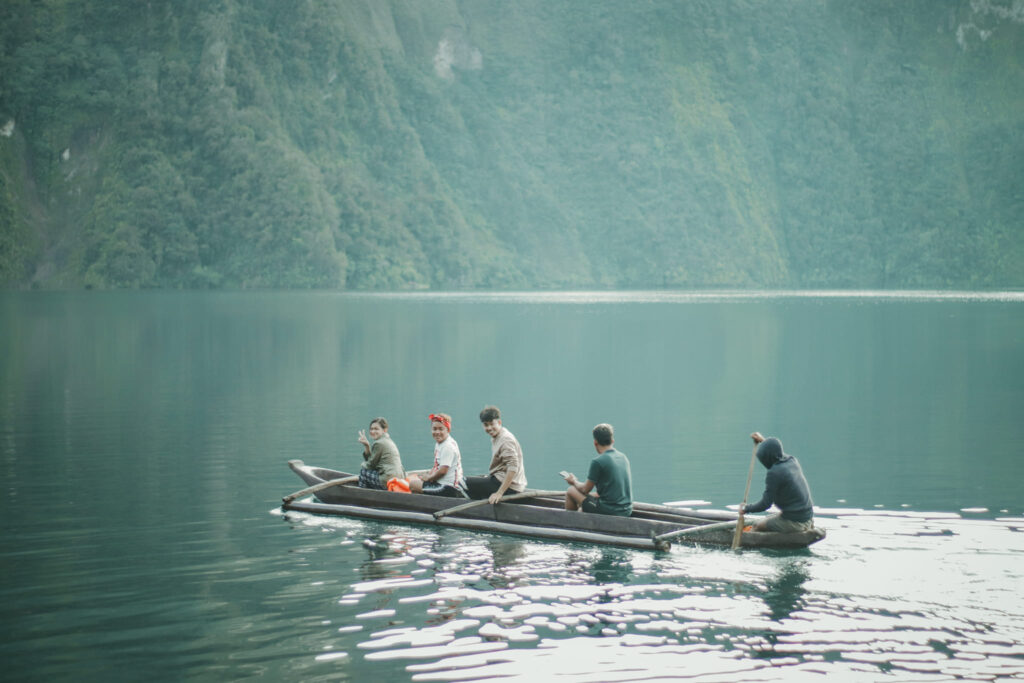
Provinces of the Philippines #69. Cotabato (North Cotabato)
📌 Overview — Why go, Top 3, Best months, Safety note, Transit
Why go: Cotabato’s uplands hide one of the country’s most photogenic falls and hot-spring basins. Asik-Asik spills lace-like over a living green wall into a clear pool. Around Kidapawan, Lake Agco steams under Mt. Apo’s skirts beside piney campgrounds. Fruit stands, coffee stalls, and ridge roads make transfers pleasant and tasty. It’s an outdoorsy loop with big payoffs even on short stays.
Top 3: Asik-Asik Falls (Alamada); Lake Agco hot springs (Kidapawan/Magpet side); Mt. Apo approaches/view decks (permits/guides).
Best months: December–April for friendlier trail and road conditions.
Safety note: Asik-Asik requires stairs and river crossings—wear grippy shoes; coordinate Apo access with accredited guides.
Transit: Fly to Davao or General Santos → vans/buses to Kidapawan/Midsayap → local rides to trailheads.
Mini-Itinerary — Cotabato
🧭 Open mini-itinerary & budget
Day 1 — Lake Agco steam pools + forest walk; fruit stands and ridge cafés.
Day 2 — Early drive to Asik-Asik Falls; swim/photos; leisurely lunch stop on return.
Estimated daily budget: ₱2,400–4,800 (US$43–86)
Provinces of the Philippines #70. South Cotabato
📌 Overview — Why go, Top 3, Best months, Safety note, Transit
Why go: South Cotabato’s Lake Sebu pairs misty mornings with T’boli culture and waterfall hikes. Seven Falls adds ziplines and forest steps beside turquoise basins. Weaving houses share brasswork, dreamweave stories, and warm homestay dinners. On clear days, Mt. Matutum crowns fruit stands and pineapple fields on highway horizons. It’s soulful, scenic, and memorable for culture lovers and soft adventurers.
Top 3: Lake Sebu (Seven Falls + zipline); T’boli weaving/brasswork visits; Mt. Matutum viewpoints/fruit stands (Tupi/Polomolok).
Best months: December–April for drier trails and clearer lake views.
Safety note: Respect cultural protocols when visiting weaving houses; trails can be slick—use guides for lesser-known falls.
Transit: Fly to General Santos (GES) → 2–3 hrs to Lake Sebu via Koronadal; vans to Tupi/Polomolok for Matutum views.
Mini-Itinerary — South Cotabato
🧭 Open mini-itinerary & budget
Day 1 — Lake Sebu boat + falls/zipline; T’boli weaving house and brasswork visit.
Day 2 — Fruit stands + Matutum viewpoints; Koronadal food crawl; return to Gensan.
Estimated daily budget: ₱2,400–4,800 (US$43–86)
Provinces of the Philippines #71. Sultan Kudarat
📌 Overview — Why go, Top 3, Best months, Safety note, Transit
Why go: Sultan Kudarat sweeps from bird-filled wetlands to ridge-line farms and hidden coves. Tacurong’s Baras Bird Sanctuary puts herons and egrets in cinematic numbers at dusk. Columbio’s La Palmera ridges and falls set breezy sunrise scenes over layered hills. Westward, Kalamansig and Lebak host quiet beaches and seafood markets. It’s a choose-your-scene province stitched together by scenic roads.
Top 3: Baras Bird Sanctuary (Tacurong); La Palmera Mountain Ridge + falls (Columbio); Lebak/Kalamansig coastal loop.
Best months: December–April for clearer skies and drier roads; bird peaks vary by season.
Safety note: Respect farm/private land boundaries on ridges; coordinate coastal boat trips locally and check weather.
Transit: Fly to General Santos (GES) or Cotabato City → vans/buses to Tacurong/Isulan → onward to Columbio/Kalamansig.
Mini-Itinerary — Sultan Kudarat
🧭 Open mini-itinerary & budget
Day 1 — Baras Bird Sanctuary dusk watch; market dinner in Tacurong.
Day 2 — La Palmera sunrise + short falls hike; drive to Lebak/Kalamansig for coves and seafood.
Estimated daily budget: ₱2,200–4,600 (US$39–82)
Provinces of the Philippines #72. Sarangani
📌 Overview — Why go, Top 3, Best months, Safety note, Transit
Why go: Sarangani arcs around a deep bay with palm-lined beaches and cliffy coastal drives. Glan’s Gumasa sands glow blond against clear, swimmable water. Offshore sanctuaries host beginner-friendly snorkels and laid-back boat days. Maitum adds caves, river scenes, and heritage notes at its small museum. With General Santos nearby, logistics stay simple while the coast feels pleasantly unhurried.
Top 3: Gumasa Beach (Glan); Maasim/Maasim Bay coves and snorkel sites; Maitum museum + river/cave detours.
Best months: February–May for the calmest seas; October festivals vary by town.
Safety note: Coordinate boat days with accredited operators; observe sanctuary rules and bring reef-safe sunscreen.
Transit: Fly to General Santos (GES) → 1–2 hrs by land to Glan/Maasim/Maitum; coastal towns linked by scenic highways.
Mini-Itinerary — Sarangani
🧭 Open mini-itinerary & budget
Day 1 — Gumasa beach day; sunset on the point; seafood dinner.
Day 2 — Maasim snorkel coves or Maitum river/cave; coastal café stops; bay viewpoints at dusk.
Estimated daily budget: ₱2,400–4,800 (US$43–86)
Caraga (Region XIII)
Caraga is Mindanao’s surf-and-lagoon frontier fringed by rainforest rivers and wide waterfalls. Siargao sets the pace with boardwalk sunrises, tidal pools, and island loops. Dinagat carves emerald coves and mirror pools behind short hikes. On the mainland, Tinuy-an and the Enchanted River headline photogenic day trips. Butuan’s river heritage and markets tie the route together.
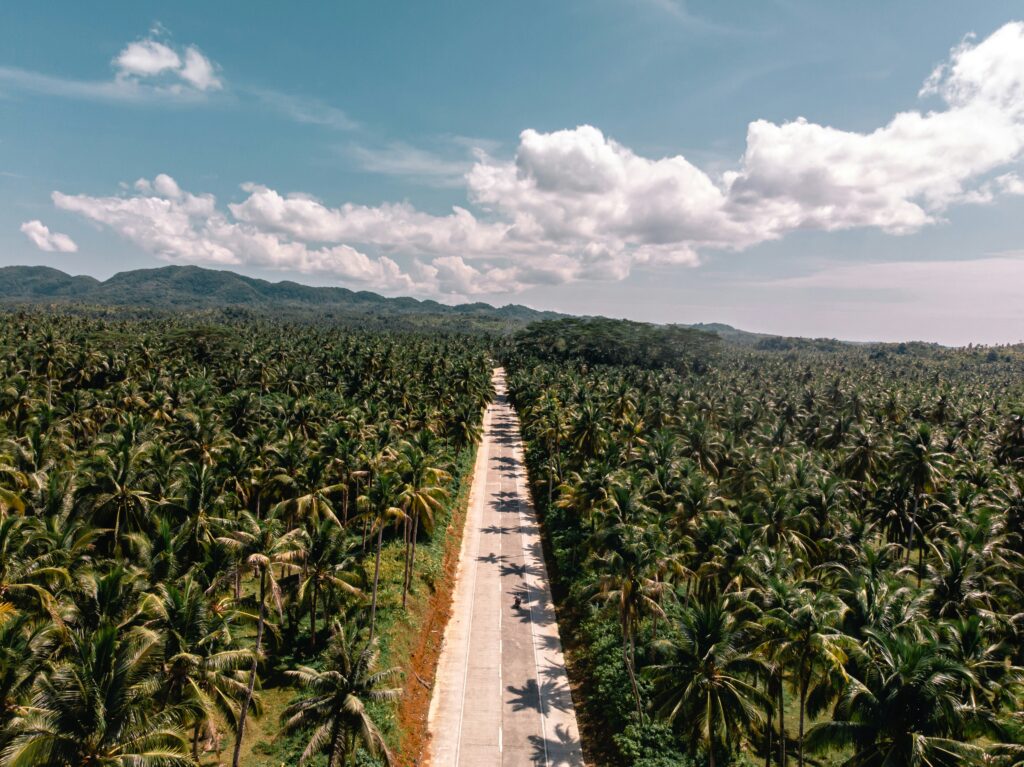
Provinces of the Philippines #73. Agusan del Norte
📌 Overview — Why go, Top 3, Best months, Safety note, Transit
Why go: Agusan del Norte centers on Butuan’s river story, balangay boats, and easy day trips to hills and coves. Museums and riverside parks turn afternoons into gentle heritage walks. Masao’s coast and nearby waterfalls add green-and-blue refreshers close to town. Markets deliver sikwate, suman, and seafood to fuel slow explorations. It’s a flexible base that pairs culture with quick nature escapes.
Top 3: Balangay Shrine + Butuan National Museum; Agusan River promenade/river cruise; Masao beach + nearby falls/hill viewpoints.
Best months: December–May for drier walks and friendlier river conditions.
Safety note: Rivers can swell after heavy rain—check local advisories; bring sun/rain protection for mixed weather days.
Transit: Fly to Butuan (BXU); short land hops cover museums, riverfront, Masao, and nearby barangays.
Mini-Itinerary — Agusan del Norte
🧭 Open mini-itinerary & budget
Day 1 — Museum + balangay stop; riverfront walk/cruise; city café dinner.
Day 2 — Masao beach morning; nearby falls/hill viewpoint; market snacks before flight.
Estimated daily budget: ₱2,200–4,200 (US$39–75)
Provinces of the Philippines #74. Agusan del Sur
📌 Overview — Why go, Top 3, Best months, Safety note, Transit
Why go: Agusan del Sur cradles the wide Agusan Marsh, where mirror lakes and floating villages appear at dawn. Birdlife is prolific, with herons and raptors circling calm water. Forest-fringed springs and rivers offer shaded swims between boat rides. Provincial towns feel open-armed and easy to navigate. It’s a nature-first stop best enjoyed slowly and respectfully.
Top 3: Agusan Marsh Wildlife Sanctuary boat day (permits); Bunawan/Veruela lake loops; cold springs/riverside picnics.
Best months: December–April for lower rainfall and friendlier lake levels.
Safety note: Arrange permits and guides through LGUs; wear vests on boats and postpone trips after heavy rain.
Transit: Fly to Butuan (BXU) or Davao → vans/buses to Bunawan/Prosperidad; coordinate marsh access locally.
Mini-Itinerary — Agusan del Sur
🧭 Open mini-itinerary & budget
Day 1 — Marsh sunrise boat + birding; floating village lunch; lakeside siesta.
Day 2 — Spring or riverside picnic; town market loop; sunset drive along fields.
Estimated daily budget: ₱2,400–4,600 (US$43–82)
Provinces of the Philippines #75. Dinagat Islands
📌 Overview — Why go, Top 3, Best months, Safety note, Transit
Why go: Dinagat is raw, emerald, and wildly photogenic, with karst coves and mirror pools. Bababu’s lake hides behind jungle and a storied underwater cave system. Tidal pools and cliffy lookouts paint electric blues on sunny days. Fishing villages serve straightforward seafood in quiet bays. Boat loops feel adventurous yet close to hospitable communities.
Top 3: Lake Bababu hike; Pangabangan tidal pool/blue lagoon; island-hop around Basilisa/Libjo coves.
Best months: March–May for calm seas and clear skies.
Safety note: Always use accredited boats; cliffs and tidal pools get slippery—wear grippy footwear and check tide/wind windows.
Transit: Fly to Surigao City (SUG) → ferry to San Jose (Dinagat); hire boats for day loops.
Mini-Itinerary — Dinagat Islands
🧭 Open mini-itinerary & budget
Day 1 — Lake Bababu hike + swim; village seafood lunch; tidal pool at low tide.
Day 2 — Island-hop among Basilisa/Libjo coves; cliff/lookout sessions; sunset return to San Jose.
Estimated daily budget: ₱2,800–5,200 (US$50–93)
Provinces of the Philippines #76. Surigao del Norte
📌 Overview — Why go, Top 3, Best months, Safety note, Transit
Why go: Surigao del Norte is surf-and-island territory crowned by Siargao. Cloud 9’s boardwalk and reef breaks set the vibe even for non-surfers. Magpupungko’s tidal pools and Maasin’s palm river shape perfect photo hours. Bucas Grande’s Sohoton lagoons shimmer with caves and blue lakes. Food, cafés, and sunsets fill the gaps between early paddles and boat days.
Top 3: Siargao (Cloud 9 + island loop: Guyam/Daku/Naked); Magpupungko/river swings; Sohoton Cove (Bucas Grande).
Best months: March–May for calm island hops; Aug–Nov for surf season (variable).
Safety note: Check tides for Magpupungko; hire accredited pumpboats; respect reef etiquette and boat lanes around Cloud 9.
Transit: Fly to Siargao (IAO) or Surigao City (SUG) then ferry; motorbikes/van hires for loops.
Mini-Itinerary — Surigao del Norte
🧭 Open mini-itinerary & budget
Day 1 — Cloud 9 boardwalk sunrise; Magpupungko at low tide; river swing + palm road.
Day 2 — Island-hopping (Guyam/Daku/Naked) or Sohoton lagoons; sunset food crawl in General Luna.
Estimated daily budget: ₱3,000–5,800 (US$54–105)
Provinces of the Philippines #77. Surigao del Sur
📌 Overview — Why go, Top 3, Best months, Safety note, Transit
Why go: Surigao del Sur is waterfall-and-lagoon country with easy coastal drives. Tinuy-an cascades into wide curtains perfect for morning rainbows. Hinatuan’s Enchanted River glows deep blue beneath limestone overhangs. Britania’s islands offer sandbars and shallow reefs in one lazy boat day. Seafood grills and palm roads tie the route together with island-time pacing.
Top 3: Tinuy-an Falls (Bislig); Enchanted River (Hinatuan); Britania Group of Islands (San Agustin).
Best months: December–May for clearer roads and friendlier sea states.
Safety note: Arrive early at Tinuy-an for safer, calmer pools; check tide/wind for Britania; observe Enchanted River swimming zones.
Transit: Fly to Butuan/Davao then bus/van to Bislig/Hinatuan; coastal vans to Britania from Tandag/Butuan sides.
Mini-Itinerary — Surigao del Sur
🧭 Open mini-itinerary & budget
Day 1 — Tinuy-an Falls sunrise + mist; boulevard lunch in Bislig; blue hour in Hinatuan.
Day 2 — Enchanted River swim (AM); transfer to Britania for island-hopping; sunset seafood by the pier.
Estimated daily budget: ₱2,600–5,000 (US$46–89)
BARMM (Bangsamoro)
BARMM layers island pearls, inland lakes, and marshlands with deep living traditions. Tawi-Tawi and Sulu scatter sandbars and reefs beneath ridge-top viewpoints. Basilan adds sugar-soft beaches near small city waterfronts. Inland Maguindanao and Lanao frame lakes, mosques, textiles, and warm marketplaces. Coordinate routes with local tourism offices and enjoy travel that’s locally guided and story-rich.
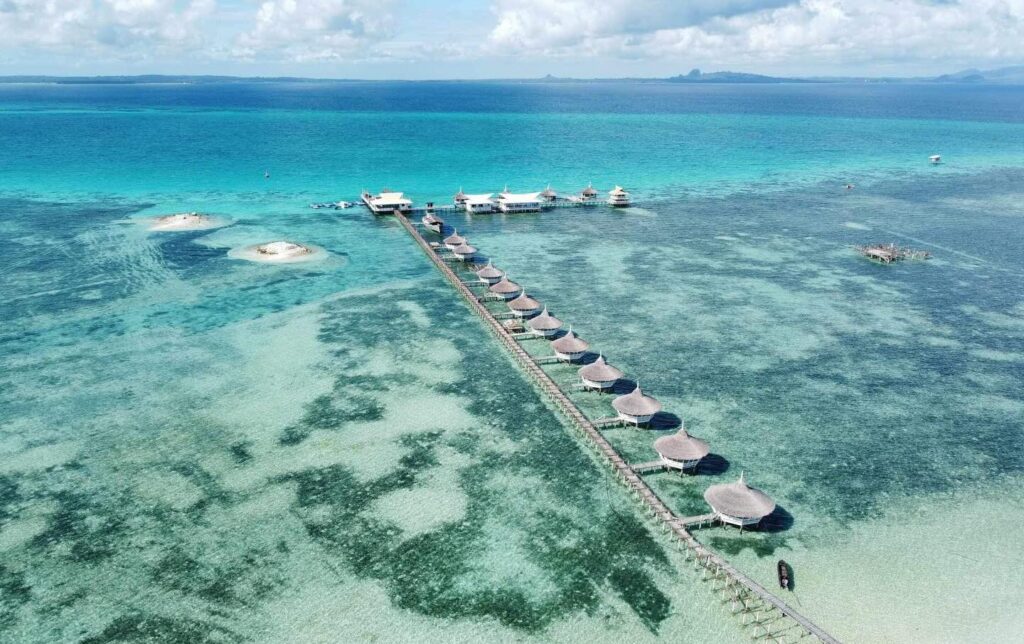
Provinces of the Philippines #78. Basilan
📌 Overview — Why go, Top 3, Best months, Safety note, Transit
Why go: Basilan rewards patient travelers with sugar-soft beaches and clear, reefy shallows. Malamawi Island near Isabela City pairs powdery sand with bright, swimmable water. Lamitan’s falls and upland viewpoints add green breaks between coast hours. Markets brim with seafood and Tausug/Yakan flavors that are deeply local. Days feel unhurried, photogenic, and shaped by kind small-town rhythms.
Top 3: Malamawi White Beach; Bulingan Falls (Lamitan) + upland views; Isabela City waterfront and markets.
Best months: December–May for calmer seas and clearer visibility.
Safety note: Coordinate routes with the city/provincial tourism offices and use accredited boats/guides; monitor local security and weather advisories.
Transit: Fly to Zamboanga (ZAM) → fastcraft to Isabela City; local boats to Malamawi; vans/jeeps to Lamitan and nearby sites.
Mini-Itinerary — Basilan
🧭 Open mini-itinerary & budget
Day 1 — Malamawi White Beach swim + sandbar stroll; sunset seafood by the pier.
Day 2 — Lamitan’s Bulingan Falls and upland café; heritage/market loop in town.
Estimated daily budget: ₱2,600–5,000 (US$46–89)
Provinces of the Philippines #79. Lanao del Sur
📌 Overview — Why go, Top 3, Best months, Safety note, Transit
Why go: Lanao del Sur circles the cool, misty shores of Lake Lanao with Maranao artistry at every turn. Torogan-inspired motifs and okir woodwork appear in museums, gates, and community halls. Highland drives thread pine ridges, farm cafés, and breezy viewpoints. Markets offer palapa, pastil, and colorful textiles that tell stories. The lake’s calm horizons and cultural warmth make slow travel feel natural.
Top 3: Lake Lanao ridge viewpoints; MSU–Marawi cultural corners/museums; Maranao craft/market loop.
Best months: December–April for crisp mornings and clearer ridge views.
Safety note: Check current advisories and coordinate with local tourism desks; respect cultural protocols at mosques and campuses.
Transit: Fly to Cagayan de Oro or Cotabato City → overland to Marawi/nearby towns via Iligan road corridors.
Mini-Itinerary — Lanao del Sur
🧭 Open mini-itinerary & budget
Day 1 — Lake Lanao ridge loop + view cafés; cultural stop at campus/museum; market merienda.
Day 2 — Village craft visits; lakeside walk; sunset over pine ridges.
Estimated daily budget: ₱2,400–4,600 (US$43–82)
Provinces of the Philippines #80. Maguindanao del Norte
📌 Overview — Why go, Top 3, Best months, Safety note, Transit
Why go: Maguindanao del Norte blends coastal coves with weaving towns and lake horizons. Datu Odin Sinsuat offers Kusiong Beach days and the photogenic Blue Lagoon. Cotabato City nearby adds riverfront heritage and lively markets. Inaul textiles and Maguindanaon cuisine make memorable stops between viewpoints. Road scenes swing from mangroves to farm plains in minutes.
Top 3: Kusiong Beach + Blue Lagoon (DOS); riverfront heritage loop in/near Cotabato City; inaul textile shopping and food crawl.
Best months: December–May for drier roads and calmer coastal waters.
Safety note: Coordinate day plans with local tourism offices; observe sanctuary rules and community protocols at villages and mosques.
Transit: Fly to Cotabato City (CMX) then short land hops to DOS/coastal sites; vans/jeeps connect major towns.
Mini-Itinerary — Maguindanao del Norte
🧭 Open mini-itinerary & budget
Day 1 — Blue Lagoon + Kusiong Beach; seaside lunch; sunset riverfront walk.
Day 2 — Inaul textile/cooperative visit; mosque/heritage corners (attire rules); market food tour.
Estimated daily budget: ₱2,400–4,800 (US$43–86)
Provinces of the Philippines #81. Maguindanao del Sur
📌 Overview — Why go, Top 3, Best months, Safety note, Transit
Why go: Maguindanao del Sur opens to wetlands, lakes, and striking mosques on palm-framed roads. Buluan Lake glints with birds and quiet fishing scenes at dawn. Portions of the vast Liguasan Marsh touch its towns for seasonal birding and river views. The pink-painted Dimaukom Mosque adds a unique photo stop with proper etiquette. Food stands and fruit stalls keep transfers refreshing and local.
Top 3: Buluan Lake sunrise loop; Liguasan Marsh birding/river views (seasonal, with guides); Dimaukom “Pink” Mosque (Datu Saudi Ampatuan).
Best months: December–April for drier roads; bird activity varies by season/water levels.
Safety note: Coordinate with LGUs/tourism for marsh access and mosque visits; hire accredited boatmen/guides and follow attire rules.
Transit: Approach via General Santos or Cotabato City → vans/buses to Buluan/Isulan corridor, then local rides.
Mini-Itinerary — Maguindanao del Sur
🧭 Open mini-itinerary & budget
Day 1 — Buluan Lake sunrise + boat; market lunch; Pink Mosque visit with proper attire.
Day 2 — Guided Liguasan Marsh birding or riverside villages; fruit/seafood stalls on return.
Estimated daily budget: ₱2,400–4,800 (US$43–86)
Provinces of the Philippines #82. Tawi-Tawi
📌 Overview — Why go, Top 3, Best months, Safety note, Transit
Why go: Tawi-Tawi sits where the Sulu Sea meets Celebes blue, with sandbars and peaks in every direction. Bud Bongao’s short hike gives sweeping island views and macaque encounters. Panampangan lays down a long, dazzling sandbar over neon shallows. Simunul’s centuries-old mosque adds deep history to a sunny itinerary. Boat days feel adventurous yet close to welcoming island communities.
Top 3: Bud Bongao hike; Panampangan Sandbar; Simunul’s Sheik Karimul Makhdum Mosque + coastal villages.
Best months: February–May for calm seas and clearest water.
Safety note: Register with local tourism, hire accredited boats/guides, and observe cultural dress codes; bring reef-safe sunscreen and plenty of water.
Transit: Fly to Tawi-Tawi via Zamboanga (TWT); trikes/boats link Bongao to sandbars and nearby islands.
Mini-Itinerary — Tawi-Tawi
🧭 Open mini-itinerary & budget
Day 1 — Bud Bongao sunrise hike; Bongao market lunch; coastal viewpoints.
Day 2 — Panampangan Sandbar hours; Simunul mosque + village visits; seafood by the bay.
Estimated daily budget: ₱2,800–5,400 (US$50–98)
Route Builder: Curated Multi-Province Itineraries
North Luzon Sampler
- Manila
- La Union
- Ilocos Sur
- Ilocos Norte
- Manila/Clark
Surf warm-up in La Union, Vigan streets in Ilocos Sur, and headlands + windmills in Ilocos Norte. Keep transfers to sunrise or late afternoon so midday stays for food and sights.
Overview
Use Vigan as your heritage base and Laoag/Pagudpud for coastal viewpoints. Slot in empanada stops between museums and lighthouse hours. Evenings are for plazas and breezy baywalks.
Visayas Beaches & Heritage
- Cebu City
- Bohol
- Siquijor
- Cebu/Dumaguete
History walk in Cebu, Chocolate Hills + tarsiers + Panglao in Bohol, then Siquijor coves and waterfalls. Mix boat days with café nights to keep the pace balanced.
Overview
Book ferries a day in advance during peak months. Keep island hops to mornings for calmer seas. Evenings are for boulevard strolls and seafood markets.
Palawan With Island Contrasts
- Puerto Princesa
- El Nido
- Coron
- Fly out
Underground river + food crawl in Puerto Princesa, lagoons in El Nido, lakes and WWII wrecks in Coron. Build a buffer day so weather never steals your island time.
Overview
Book permits the day before tours. Pack reef-safe sunscreen and dry bags. Sunset dinners hit best after salt-water hours and hill viewpoints.
Mindanao Blue & Highlands
- Davao City
- Samal/Talicud
- Davao Oriental
- South Cotabato
- Surigao del Sur/Siargao
Reefs near the city, sunrise skim in Dahican, cool mornings at Lake Sebu, then blue rivers or surf to finish. Hire accredited guides for cultural stops and boat days.
Overview
Keep eyes on weather for crossings. Thread fruit stands and view cafés between legs. Expect generous scenery and mellow road hours.
Heart of the Visayas
- Cebu City
- Bantayan/Malapascua
- Bohol
- Negros Oriental
- Siquijor
- Fly out
Choose Bantayan or Malapascua to start, cruise Bohol’s rivers and beaches, then Negros Oriental for diving and springs. Optional Siquijor finale for coves and starry nights.
Overview
Transfers are short, ferries frequent, and cafés plentiful. Alternate swim days with heritage walks to keep balance. Golden hours are your camera’s best friend.
Conclusion
The Philippines rewards travelers who move with the day’s rhythm, from the sunrise coasts and market middays, to golden-hour viewpoints. Use the region intros to pick your vibe and the province sections to turn ideas into clear days. The quick-search bar and jump menu take you straight to any province, while the dropdowns keep the details tidy. Mix boat days with café nights, heritage walks with waterfalls, and short transfers with long sunsets.
Travel kindly and leave each place a touch better than you found it, from reef-safe sunscreen to pack-in, pack-out habits. Hire local guides and boats where possible so your pesos support the communities that make these trips special. Respect sacred spaces, marine rules, and trail etiquette, and you’ll be welcomed back with smiles. Whether you’re crafting a grand loop or stacking weekend escapes, there’s always another bend of coast and market flavor waiting.
When you’re ready for round two, return for the provinces you missed and let this guide sketch your next adventure.

